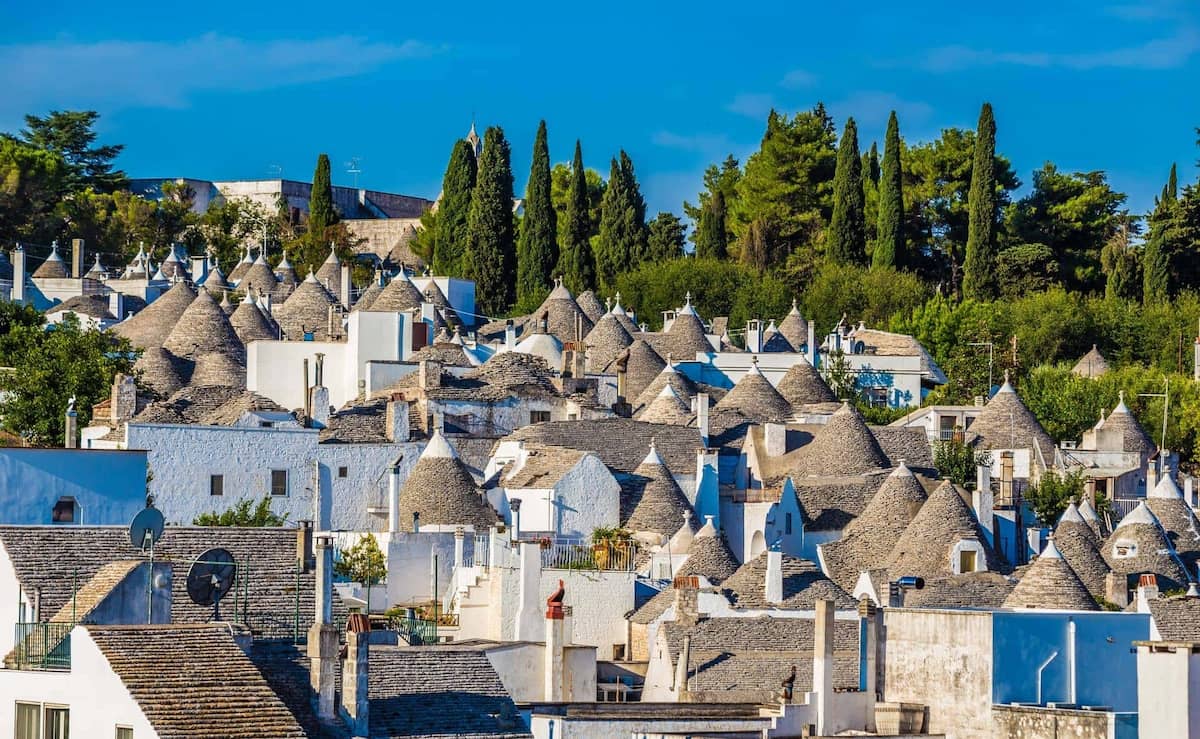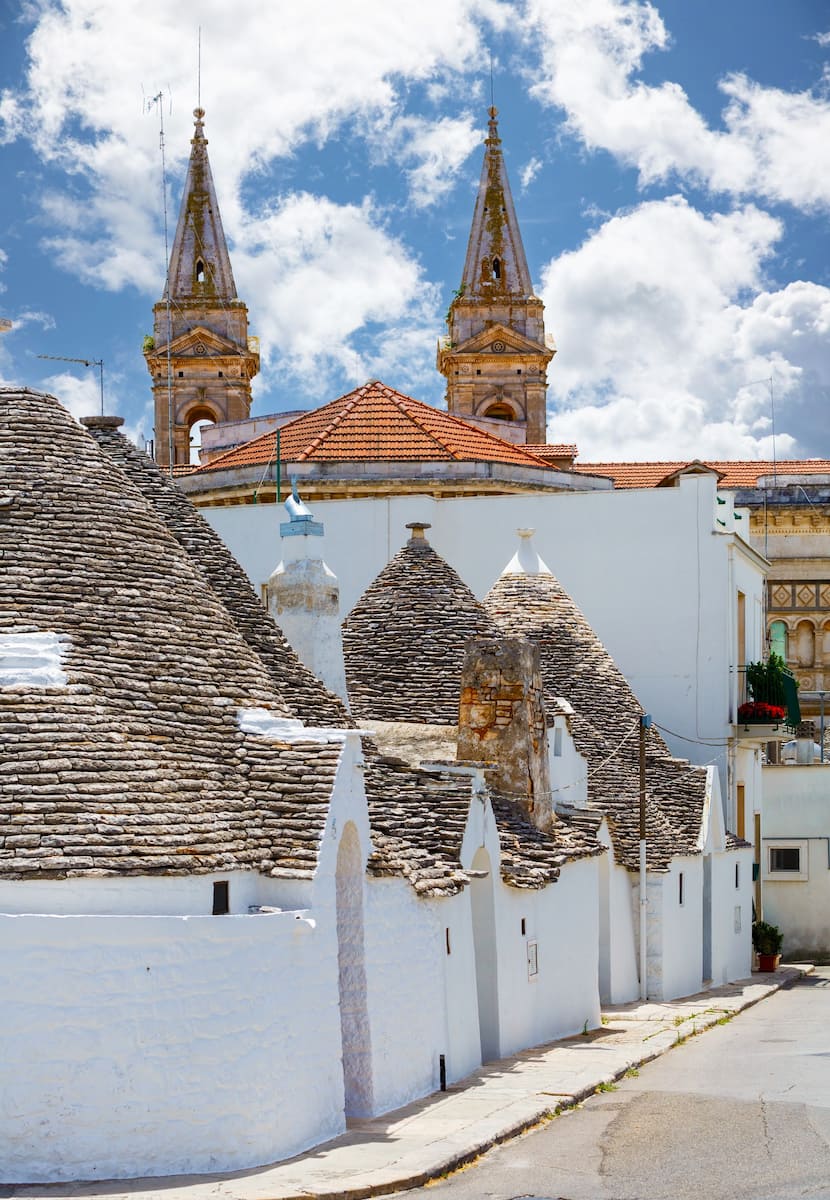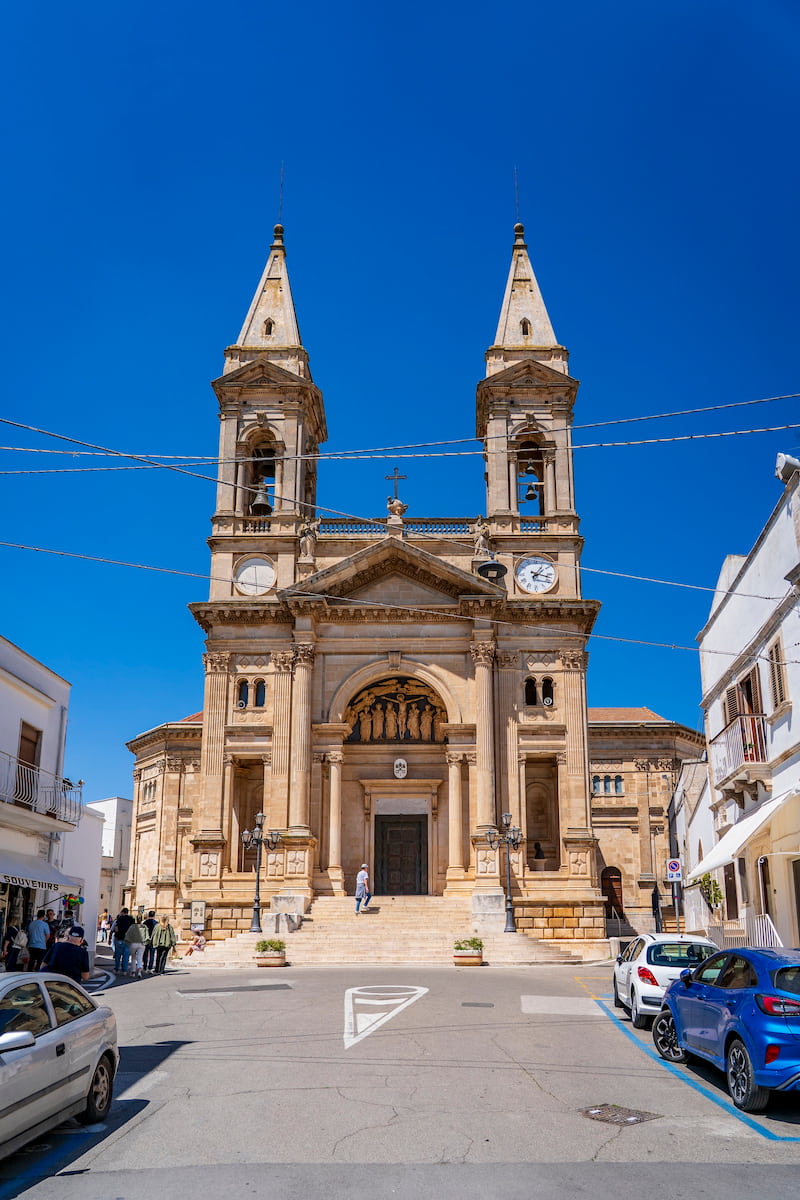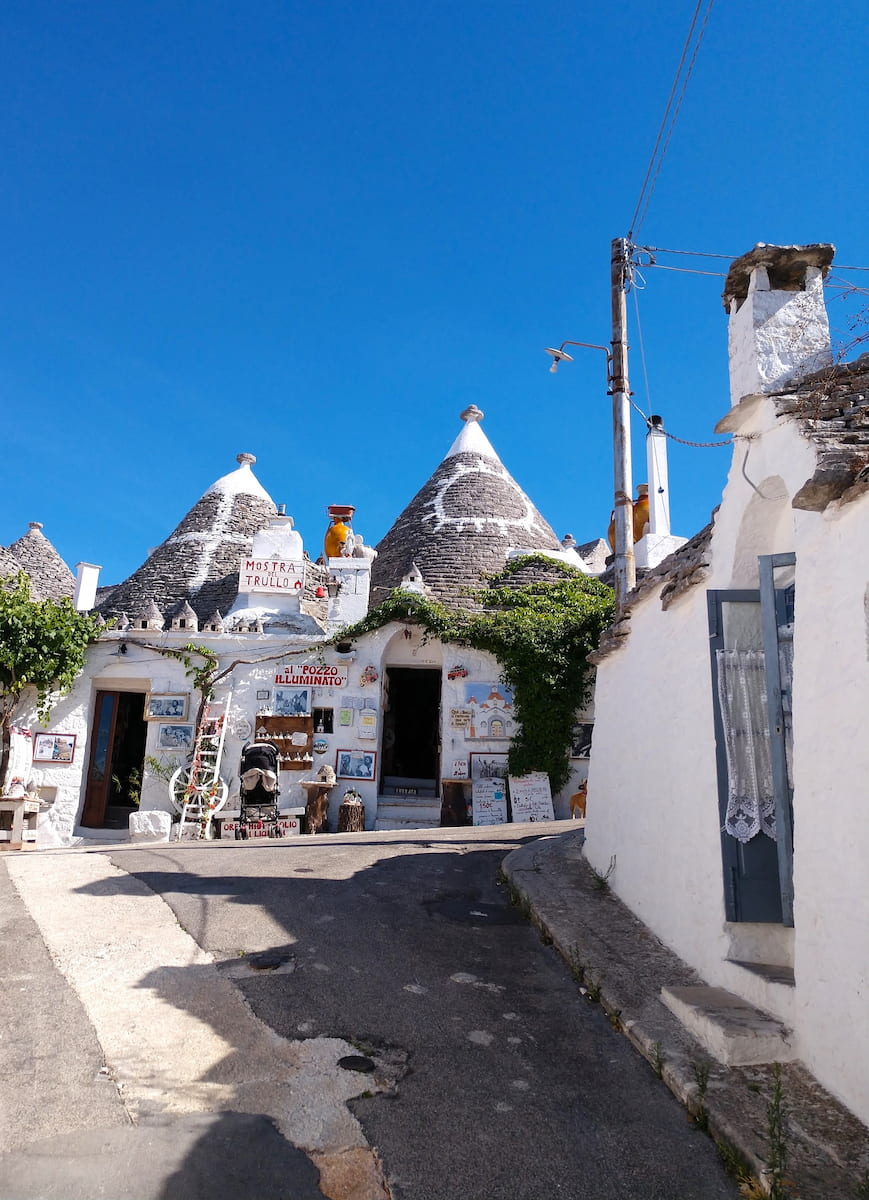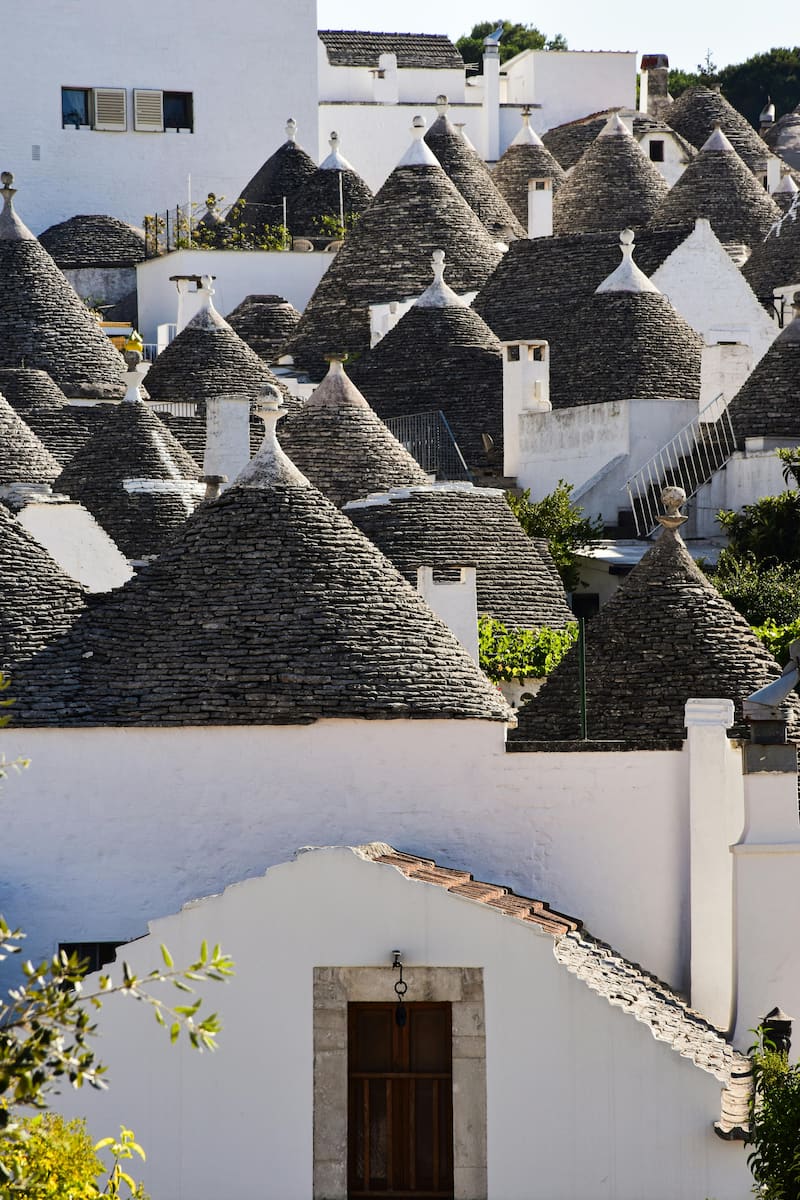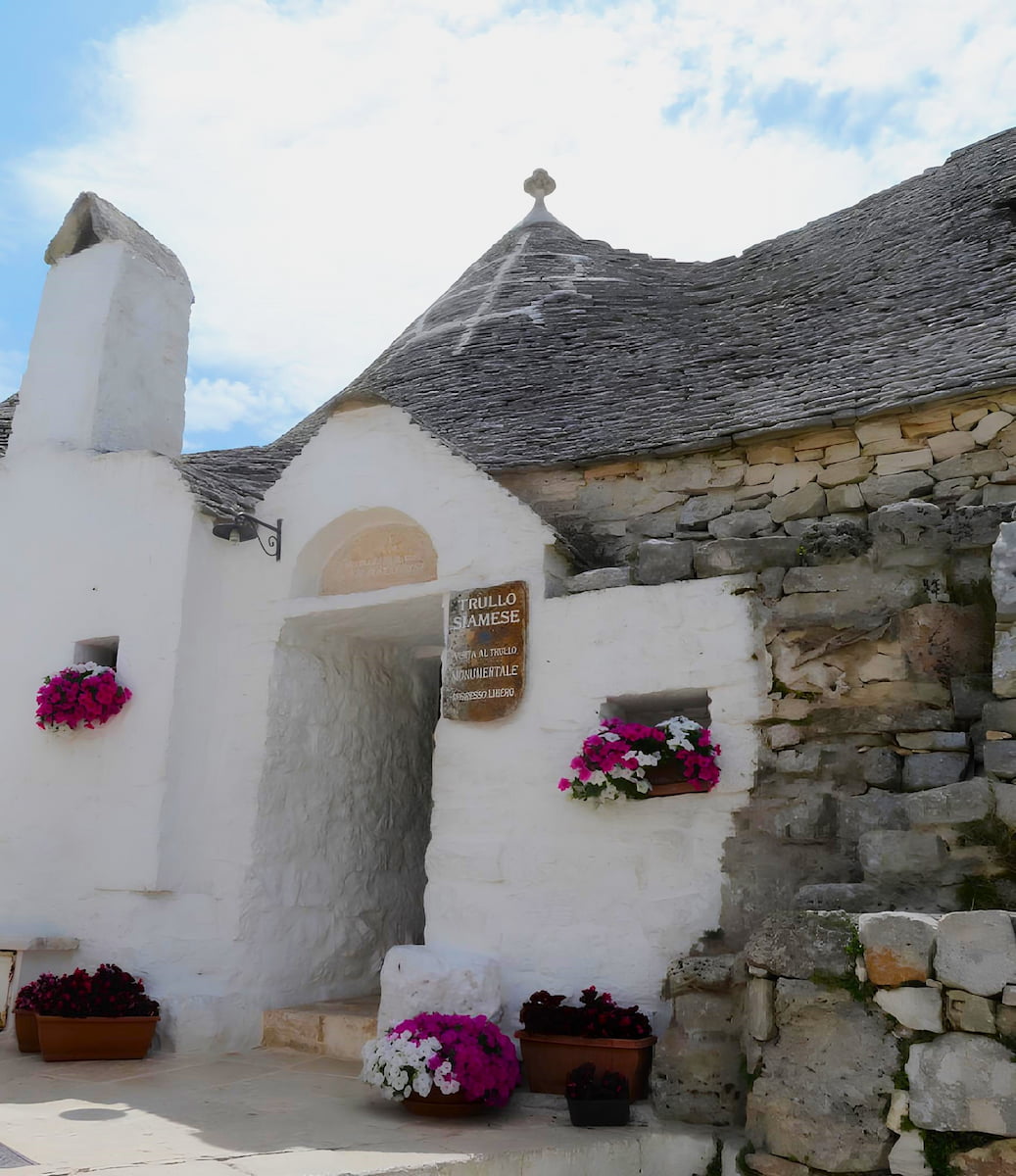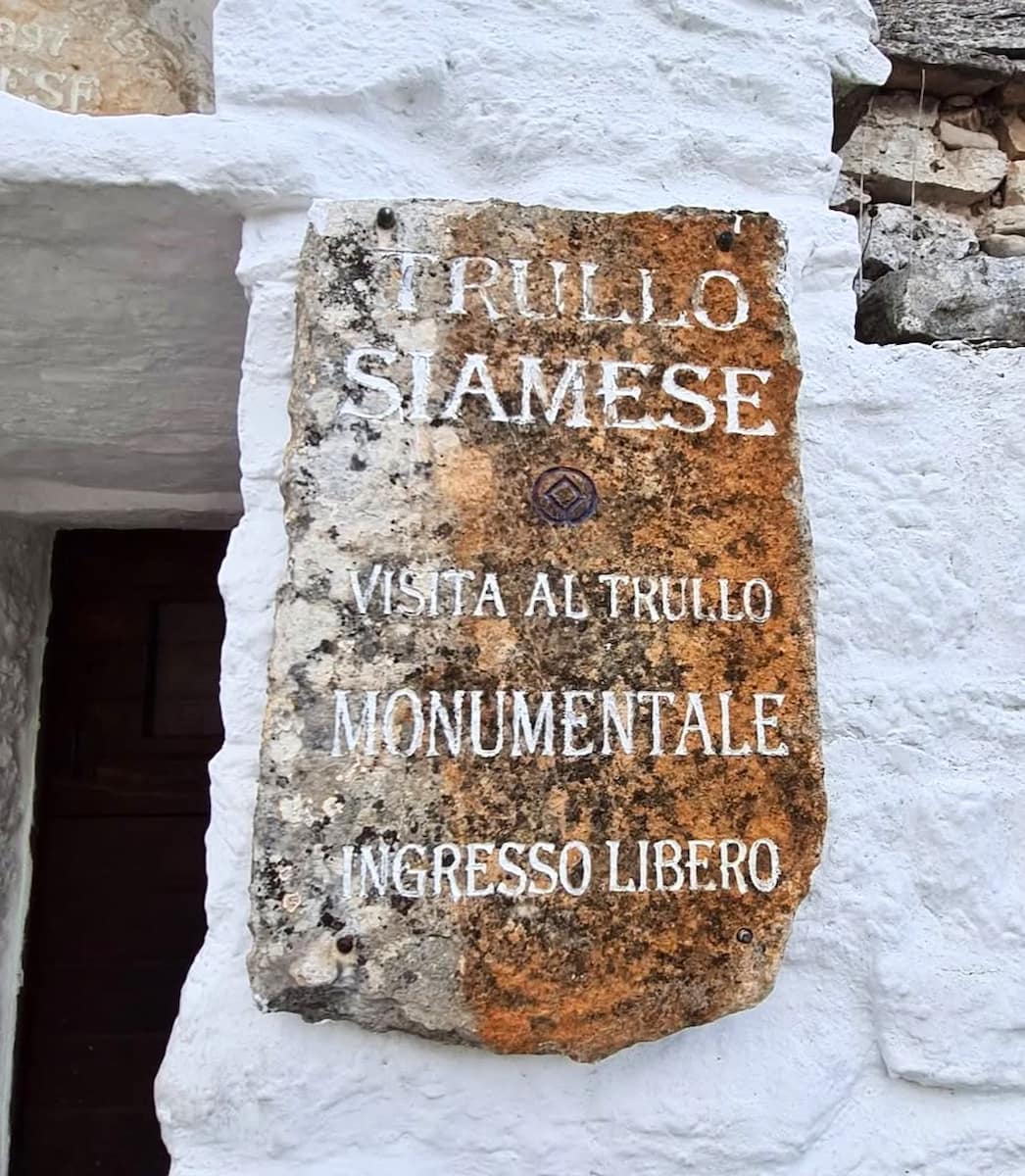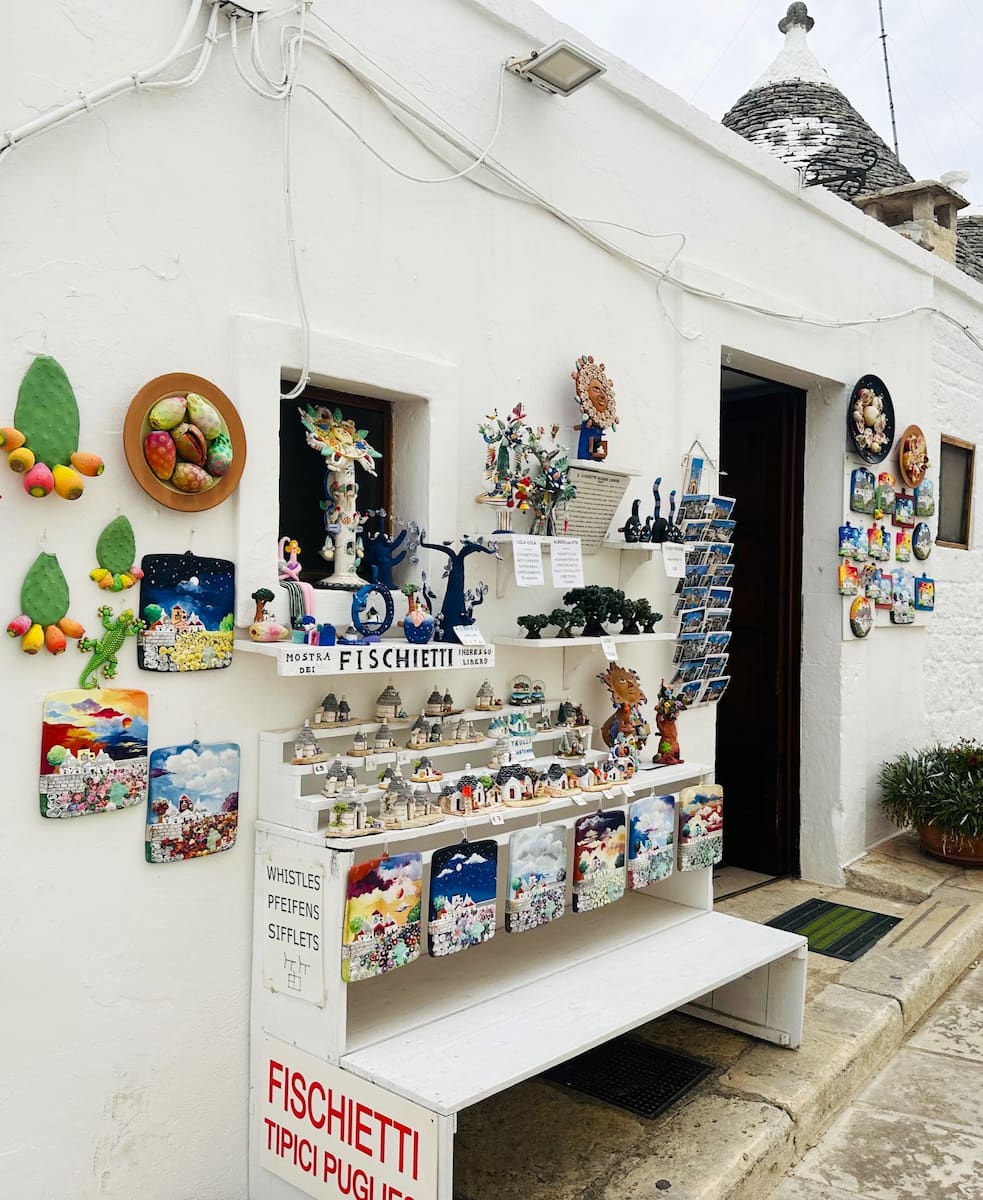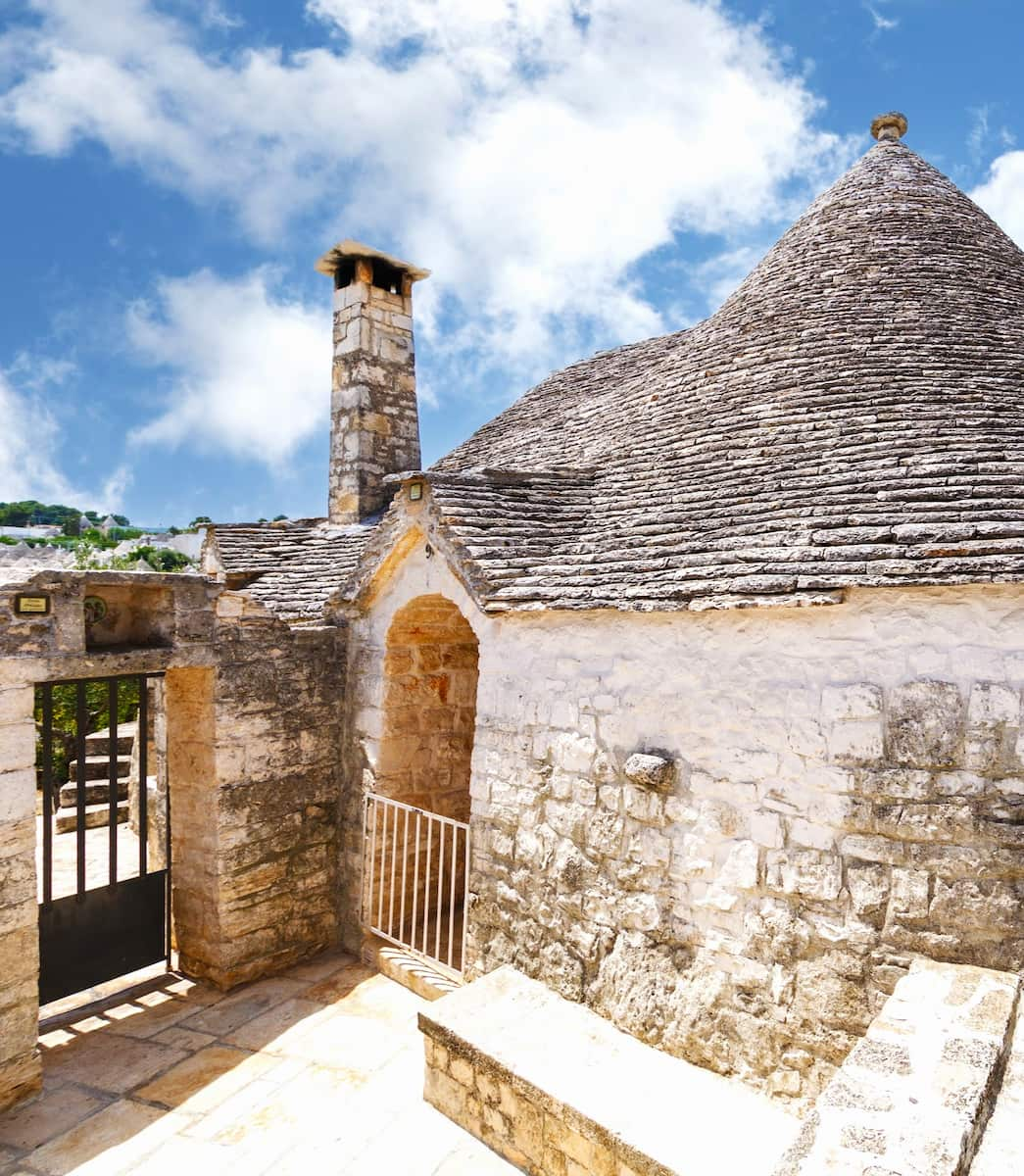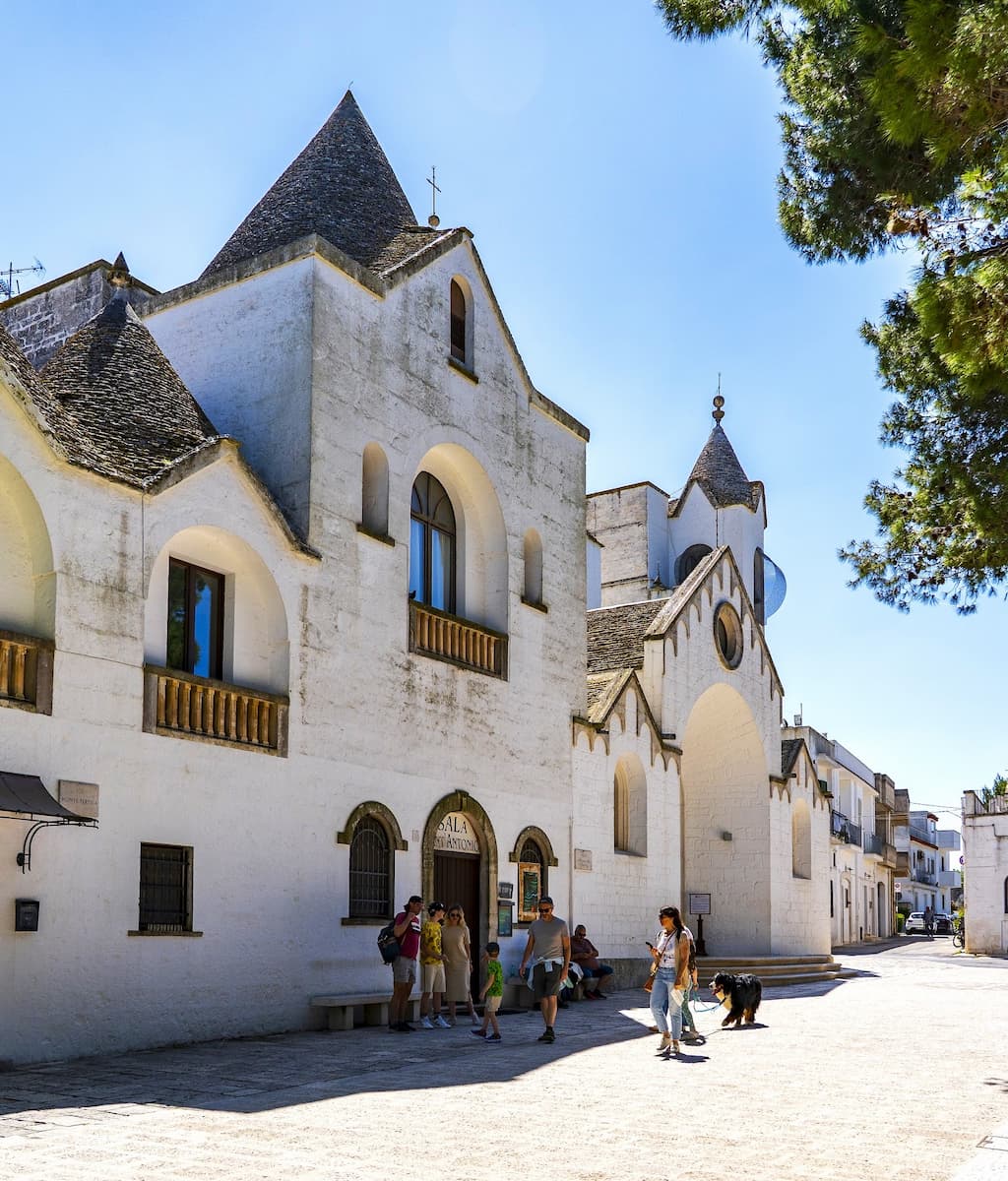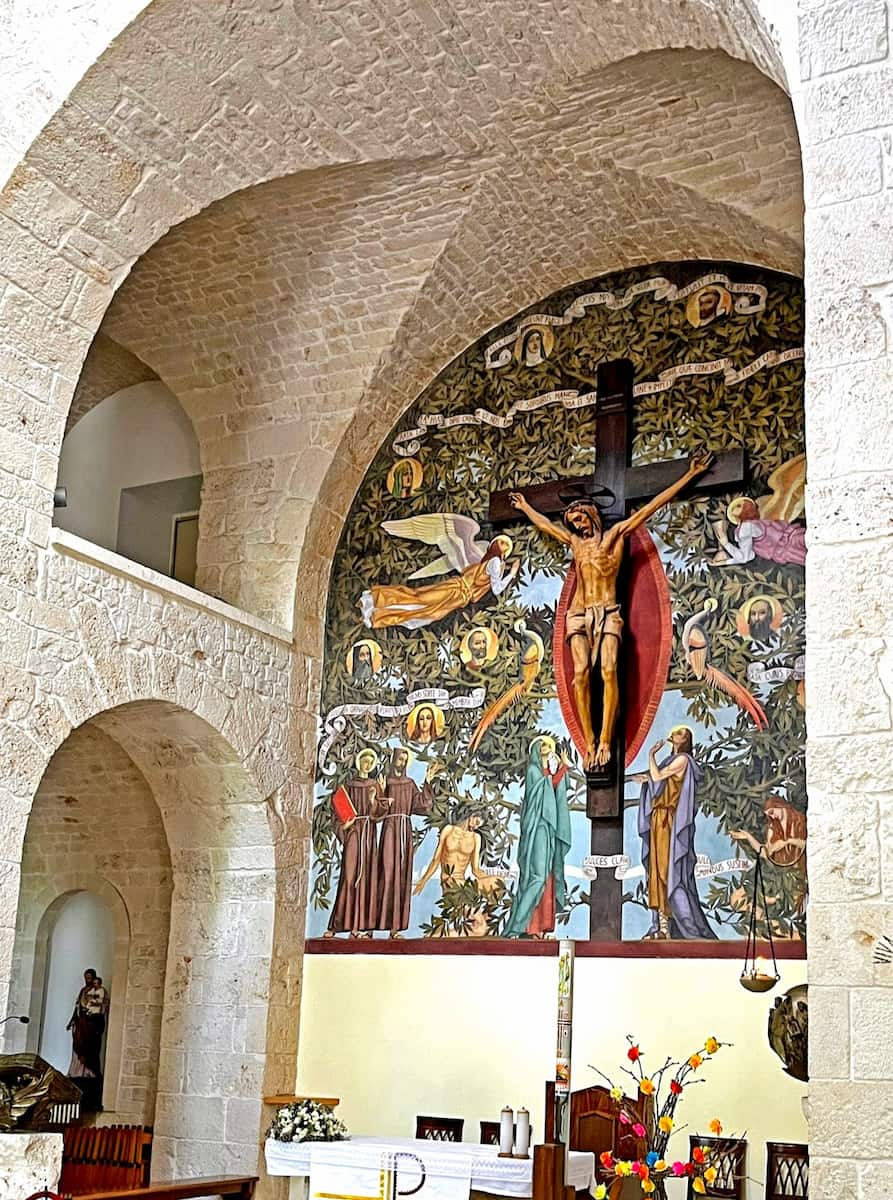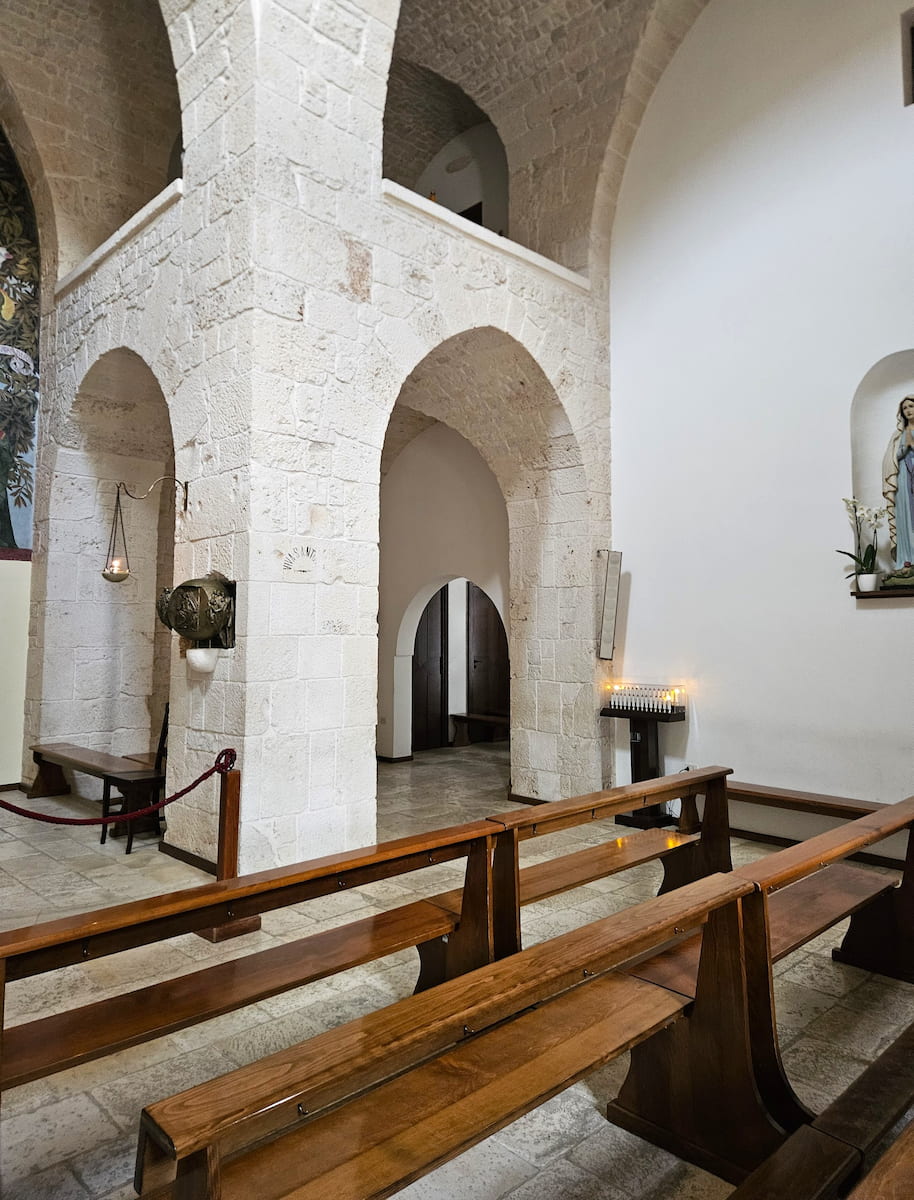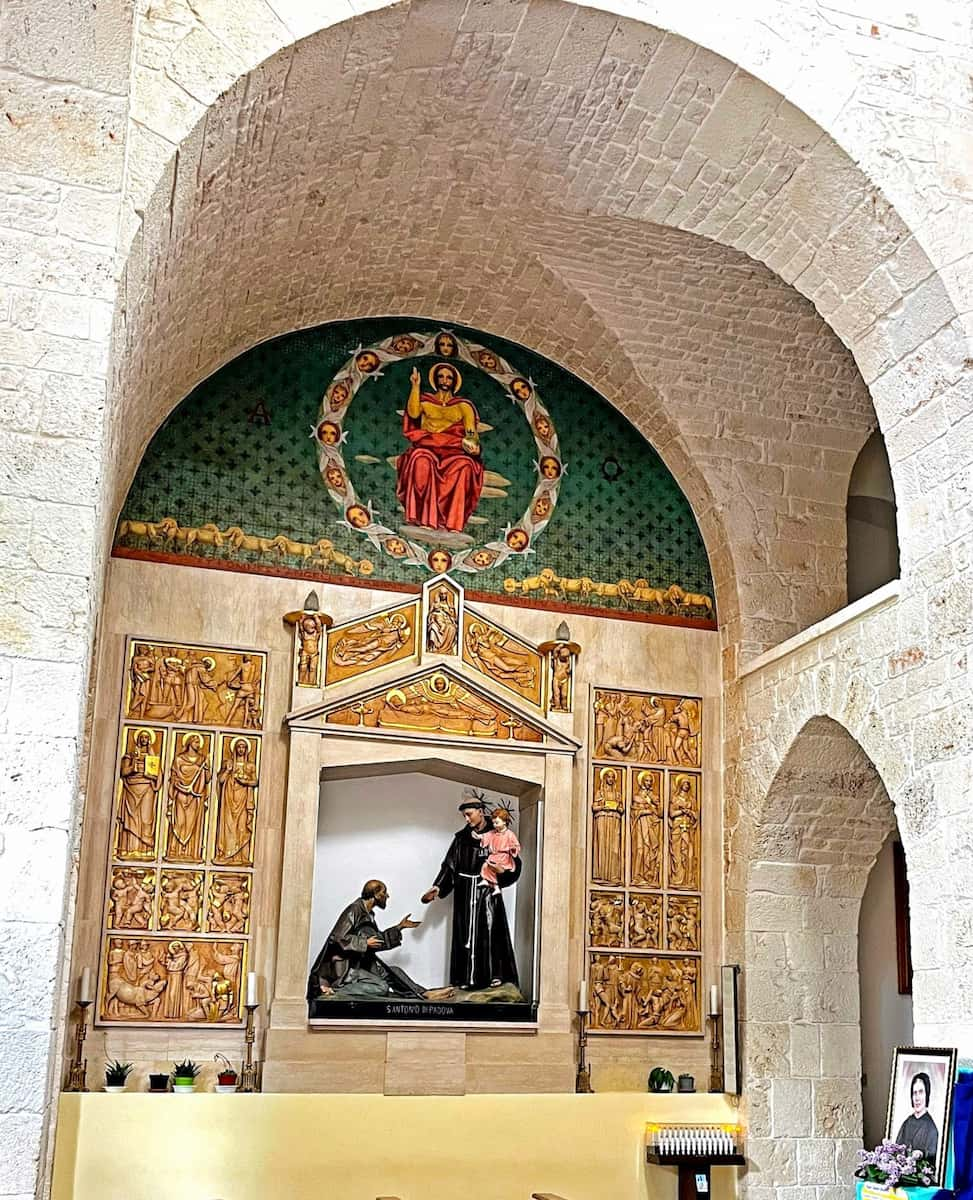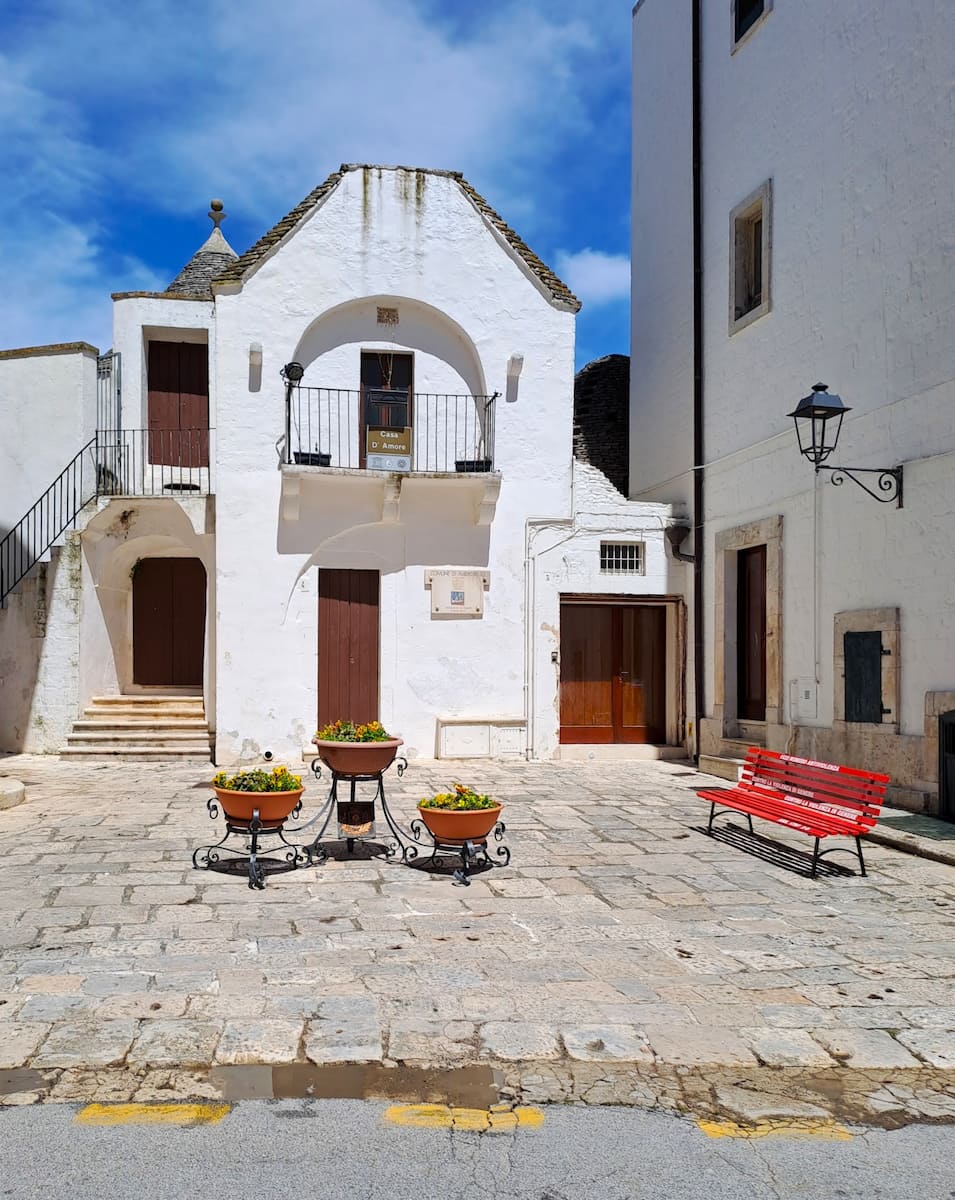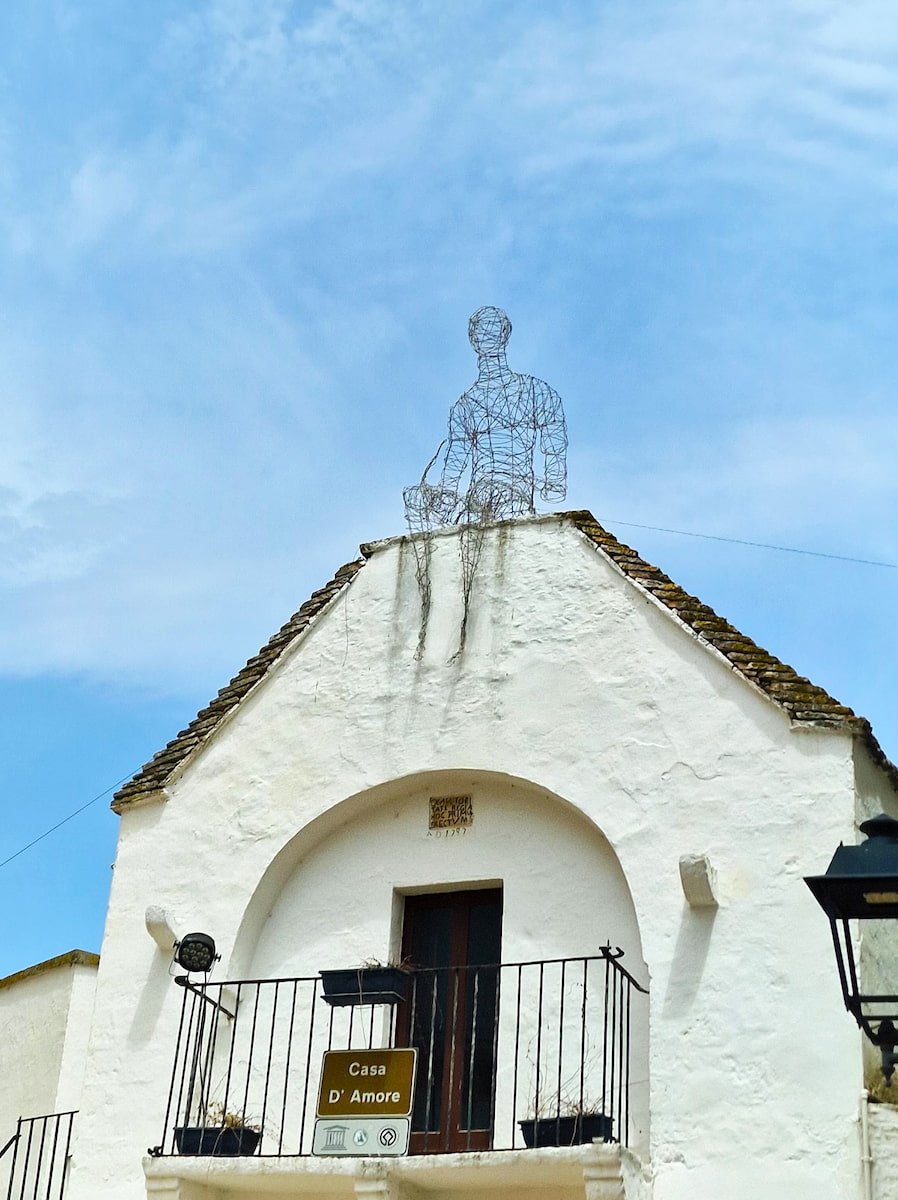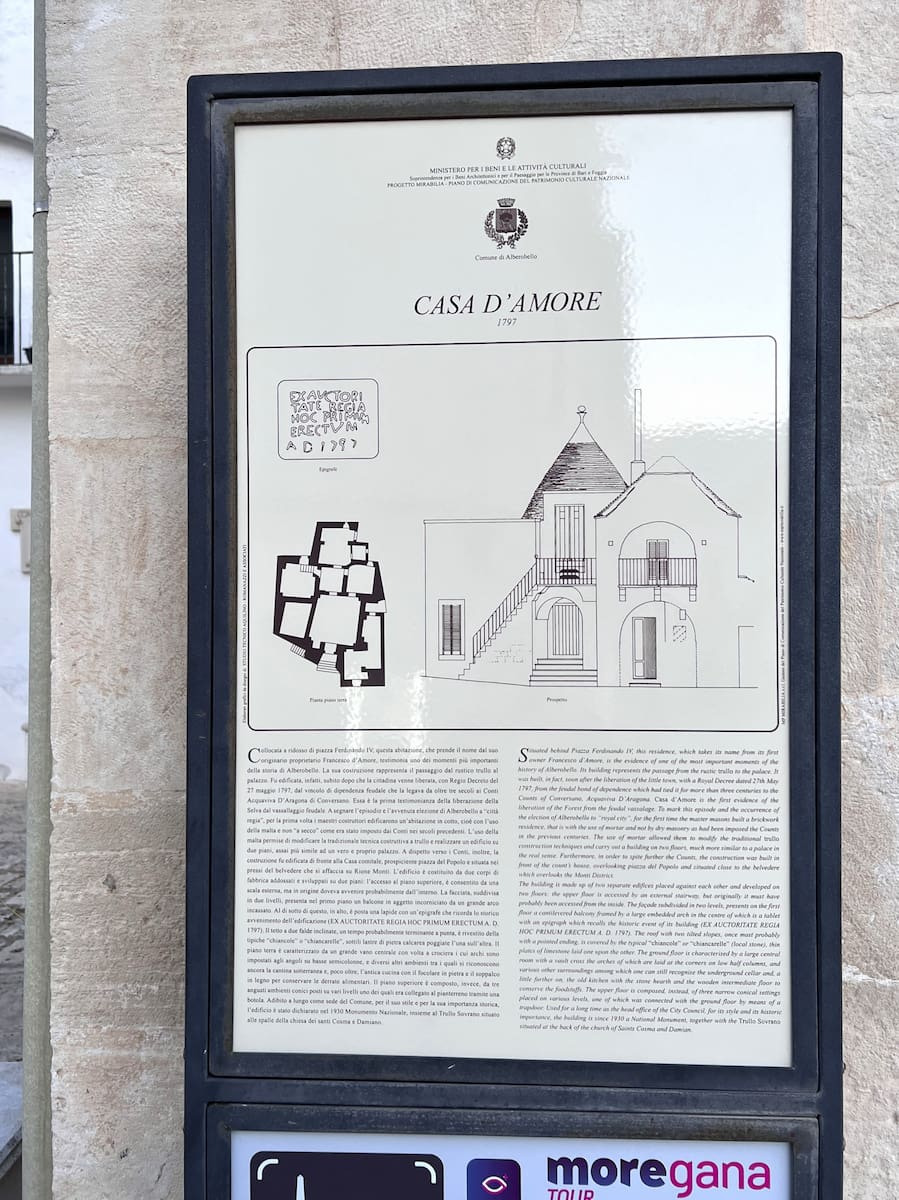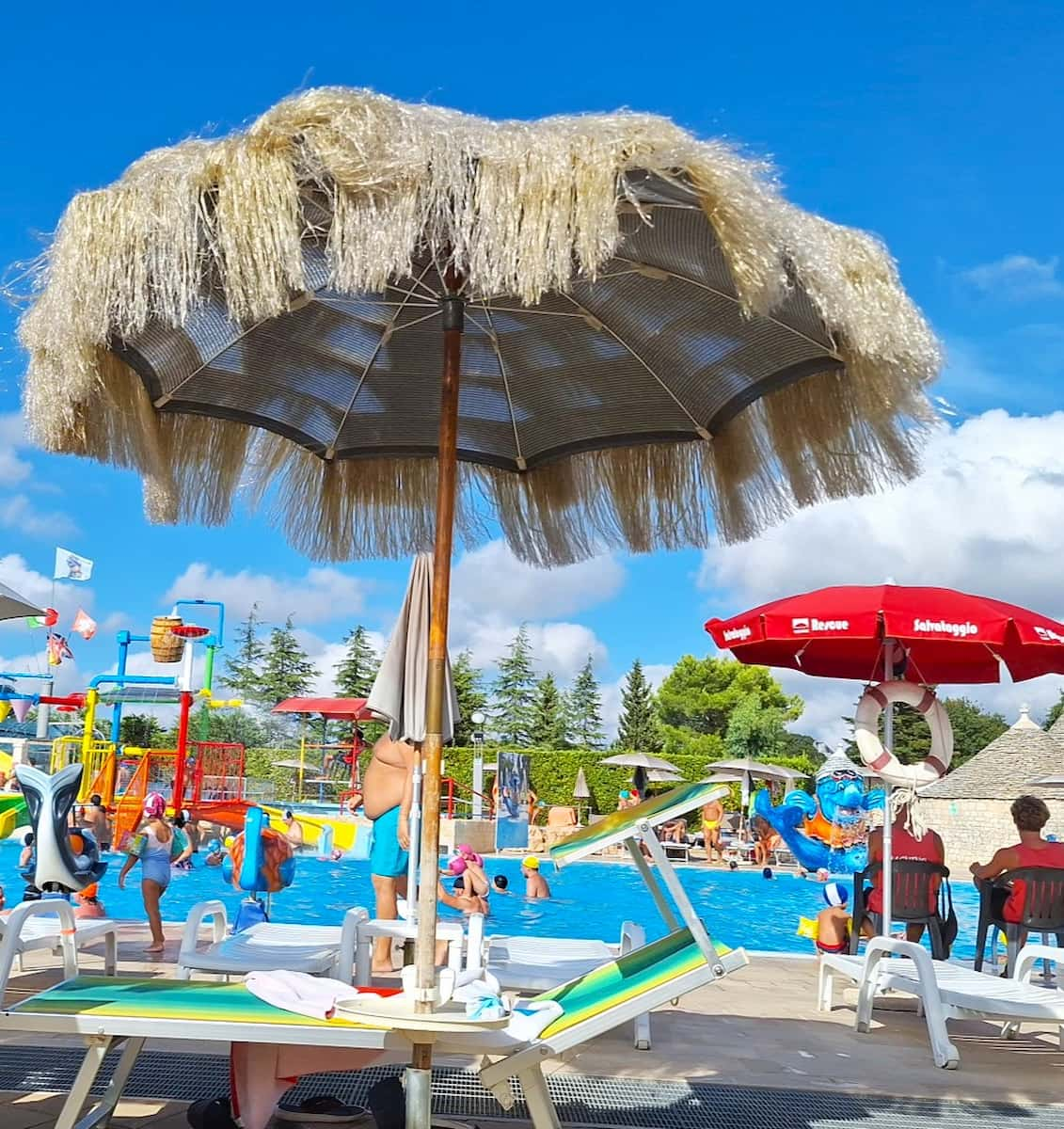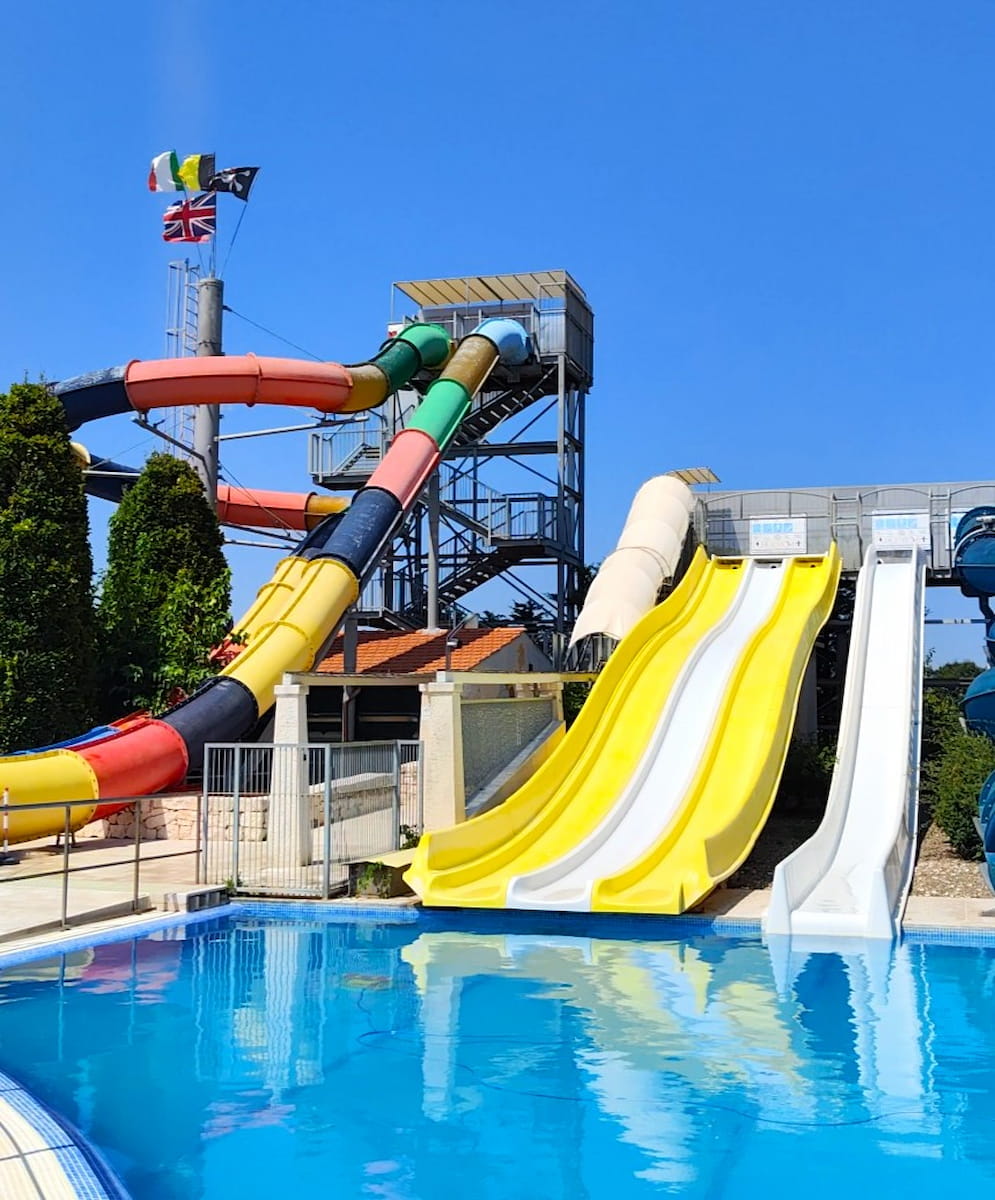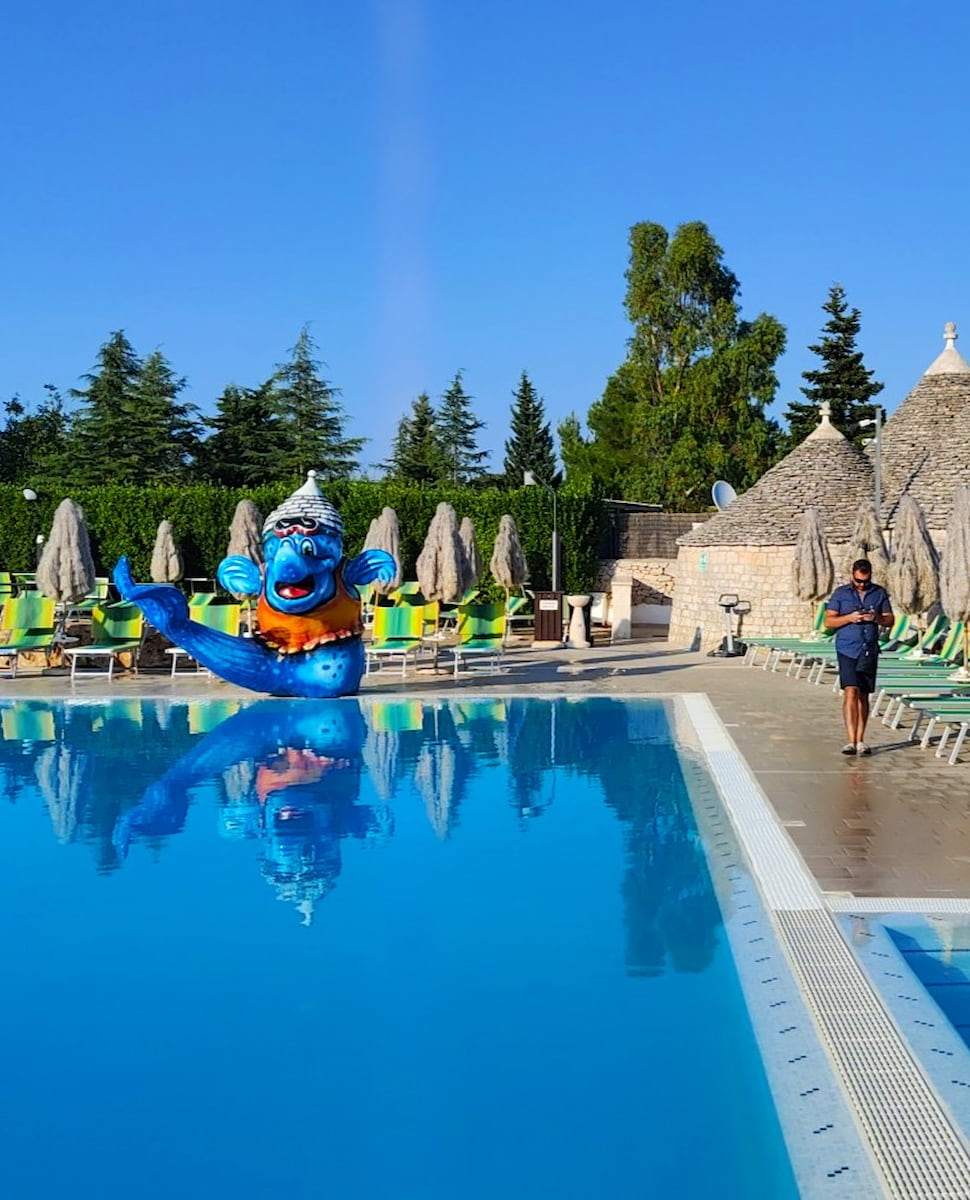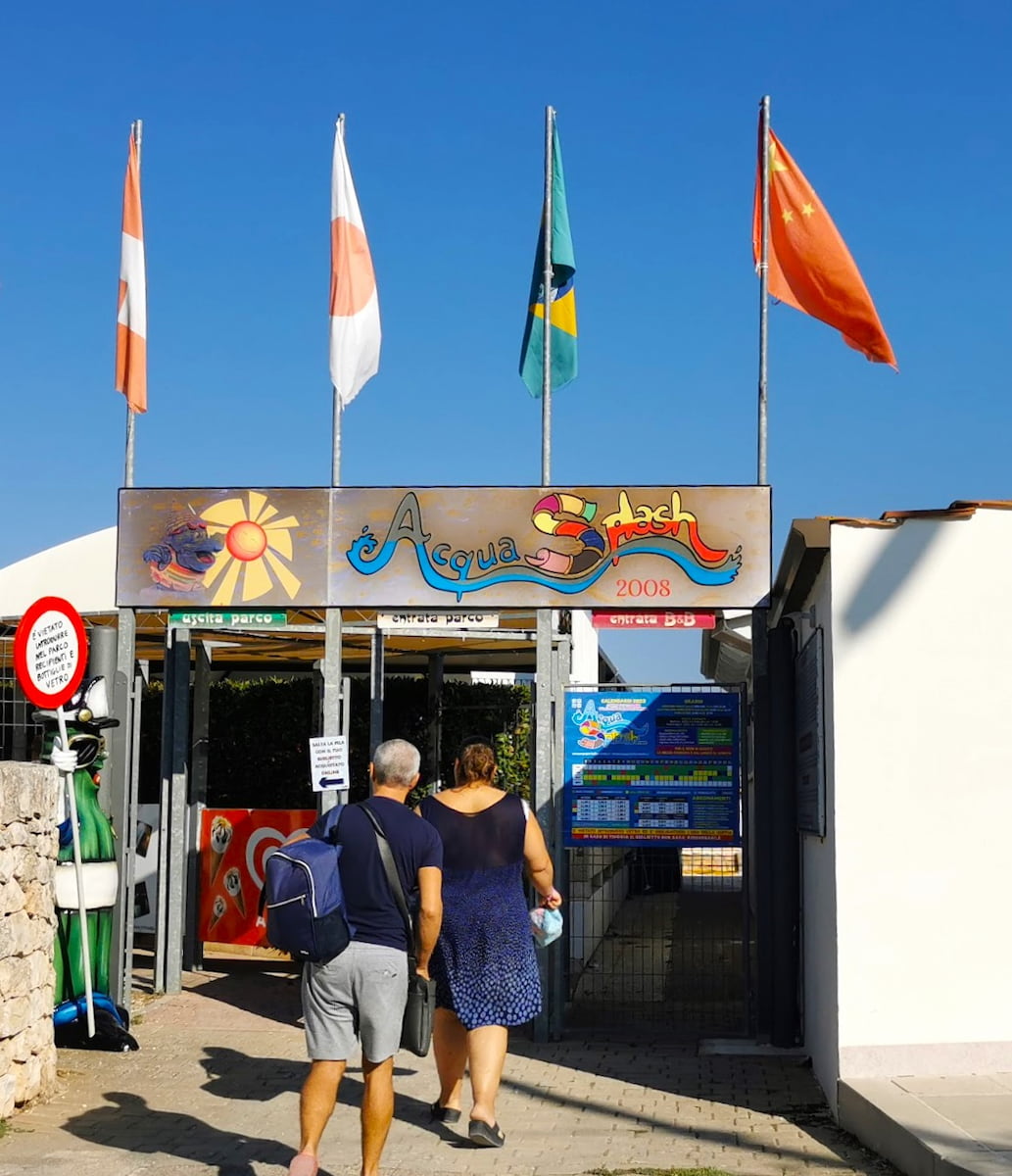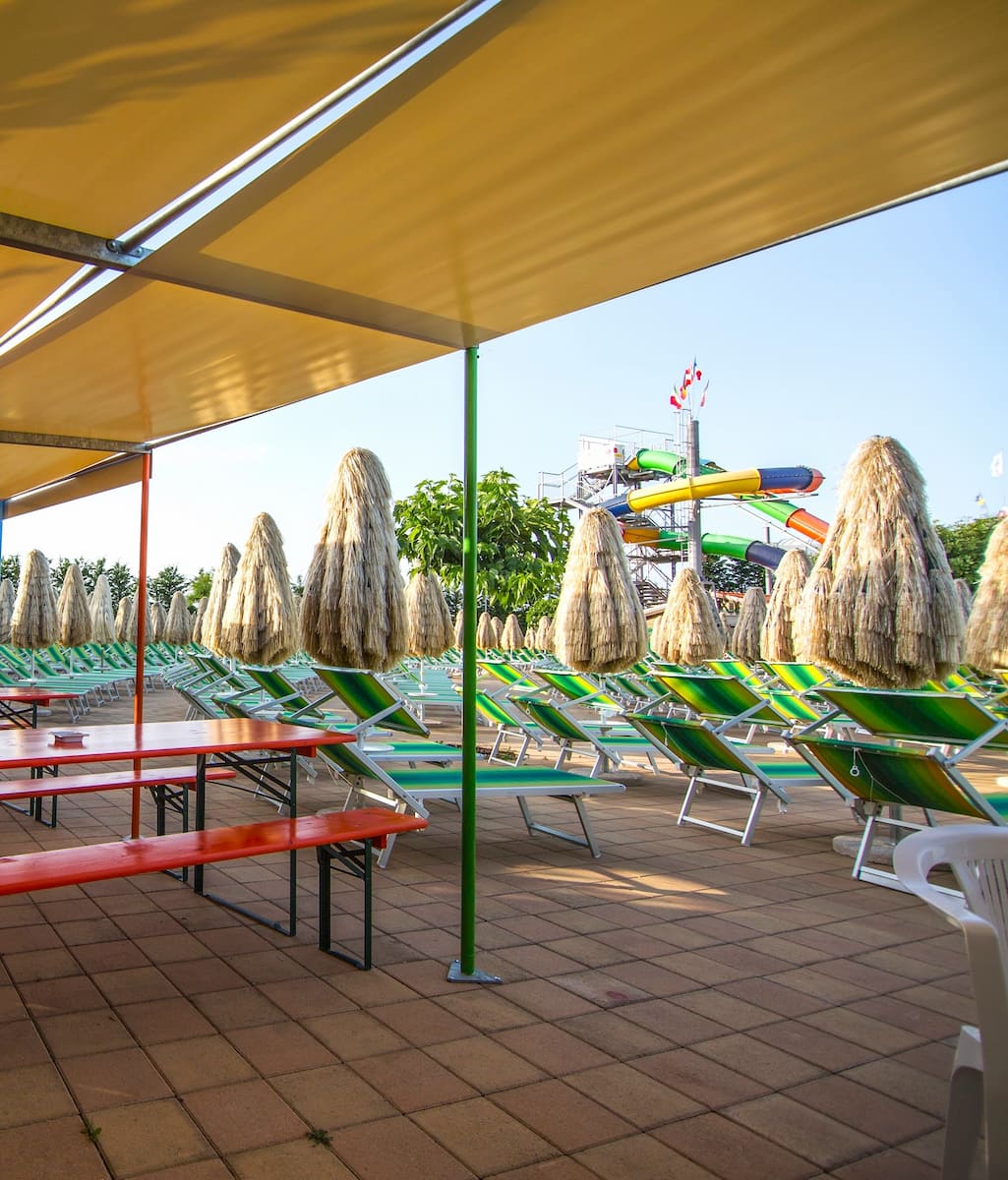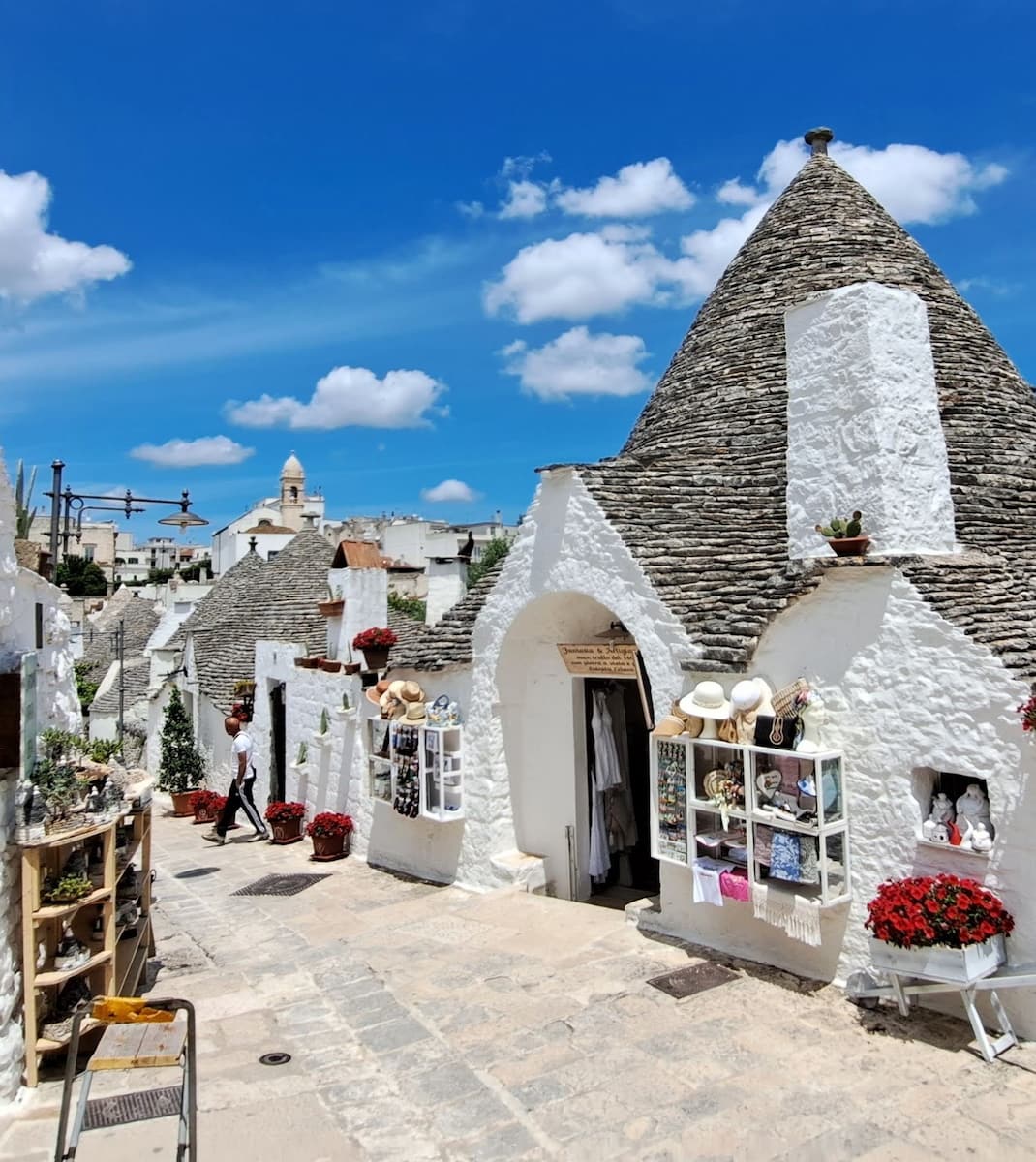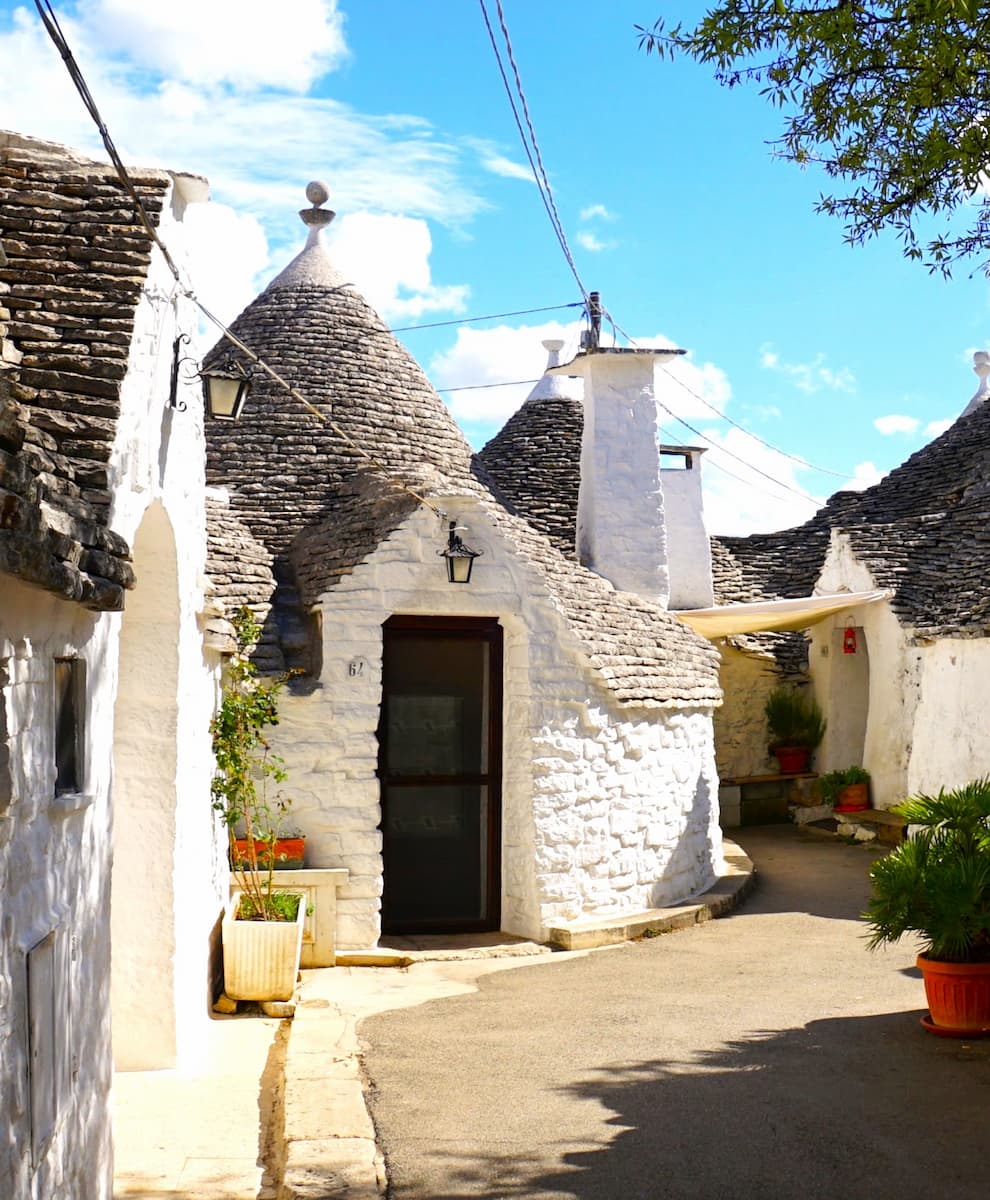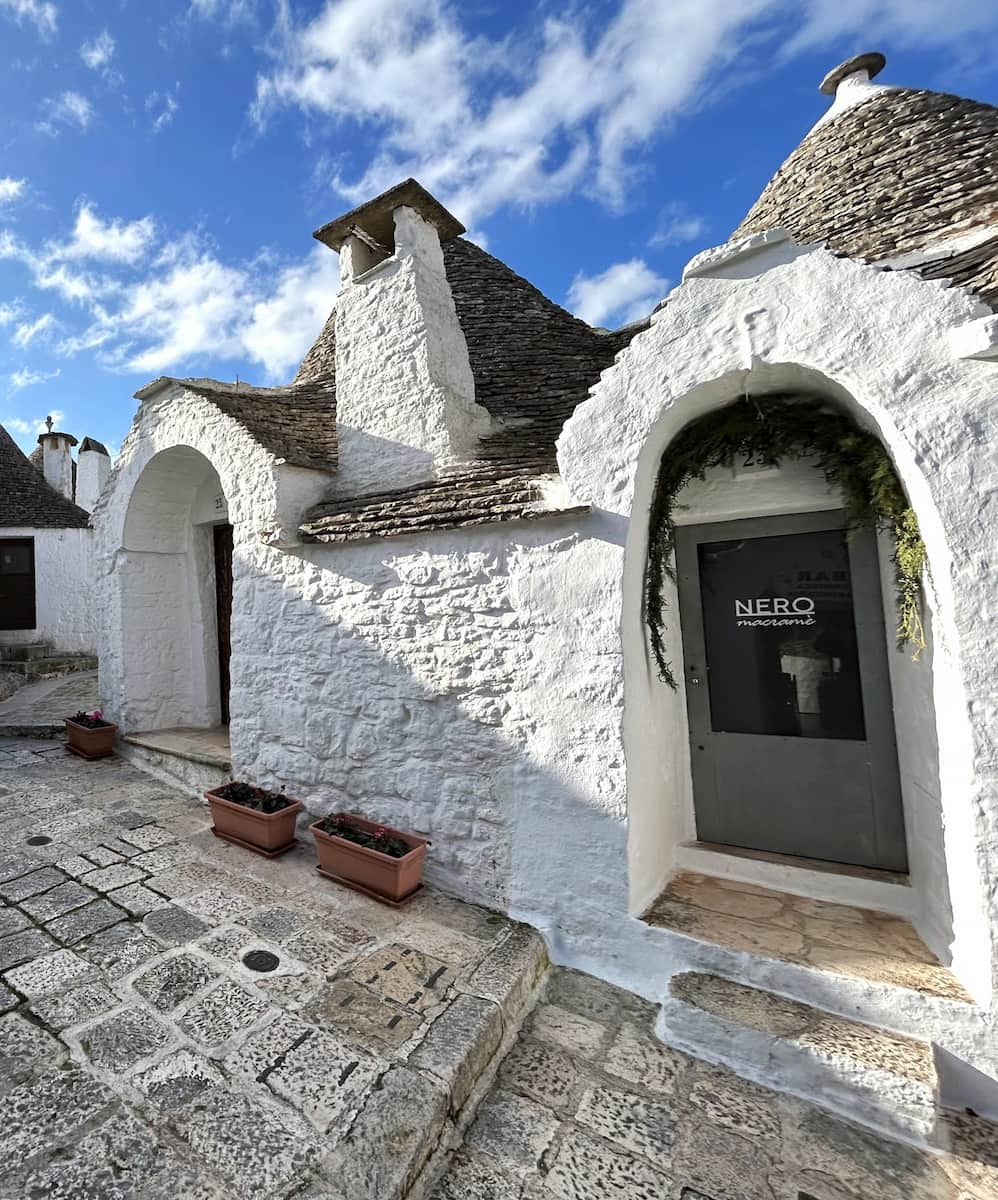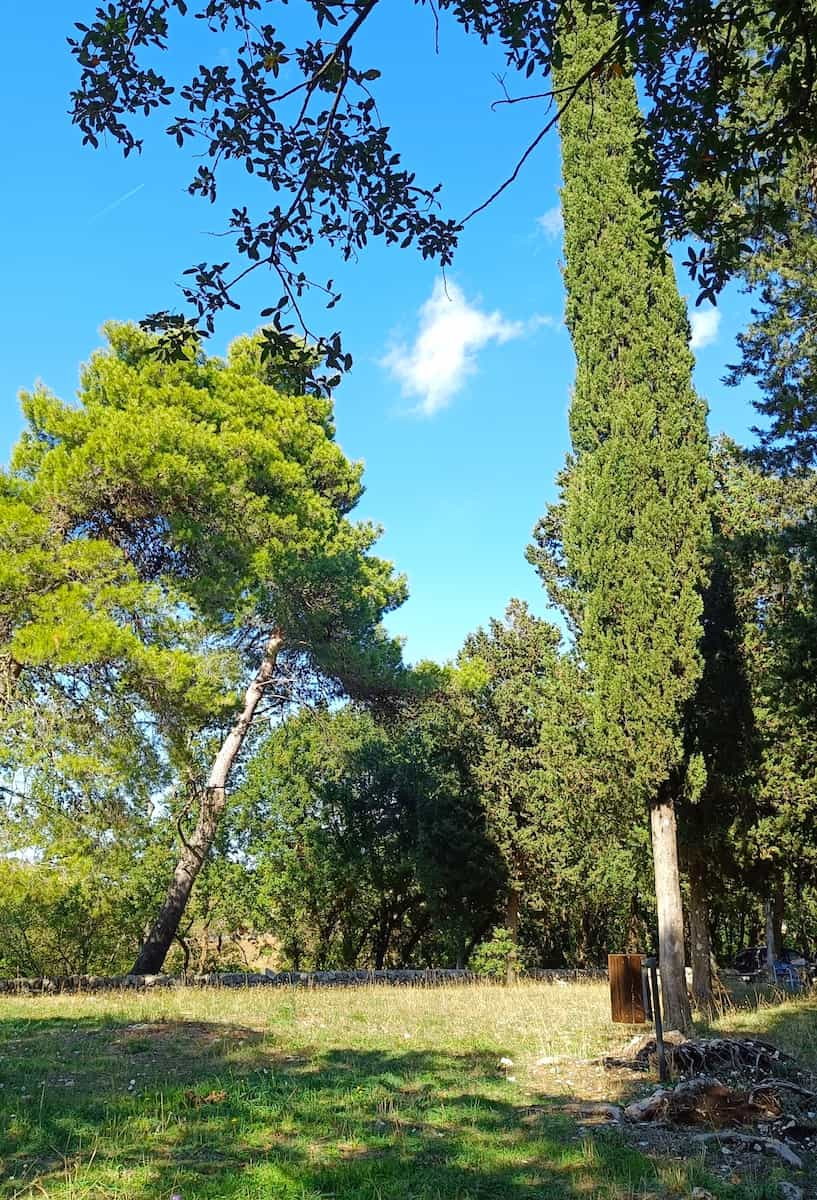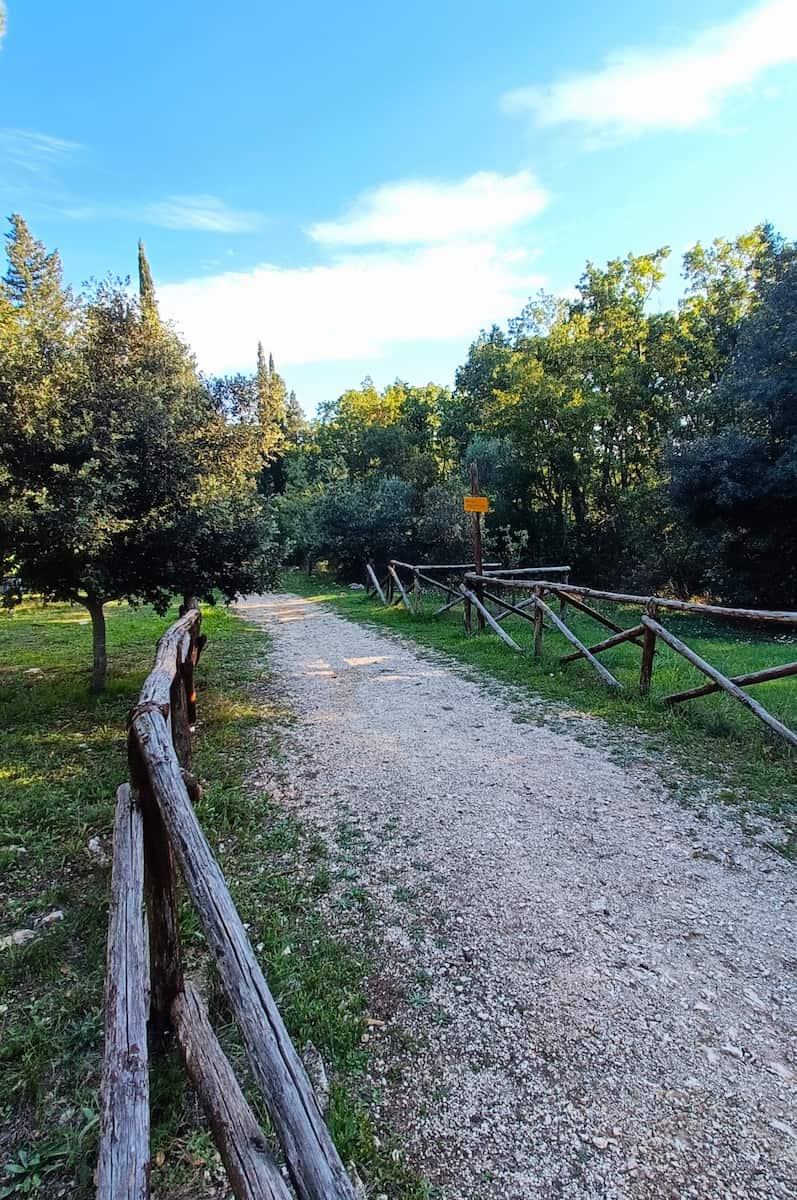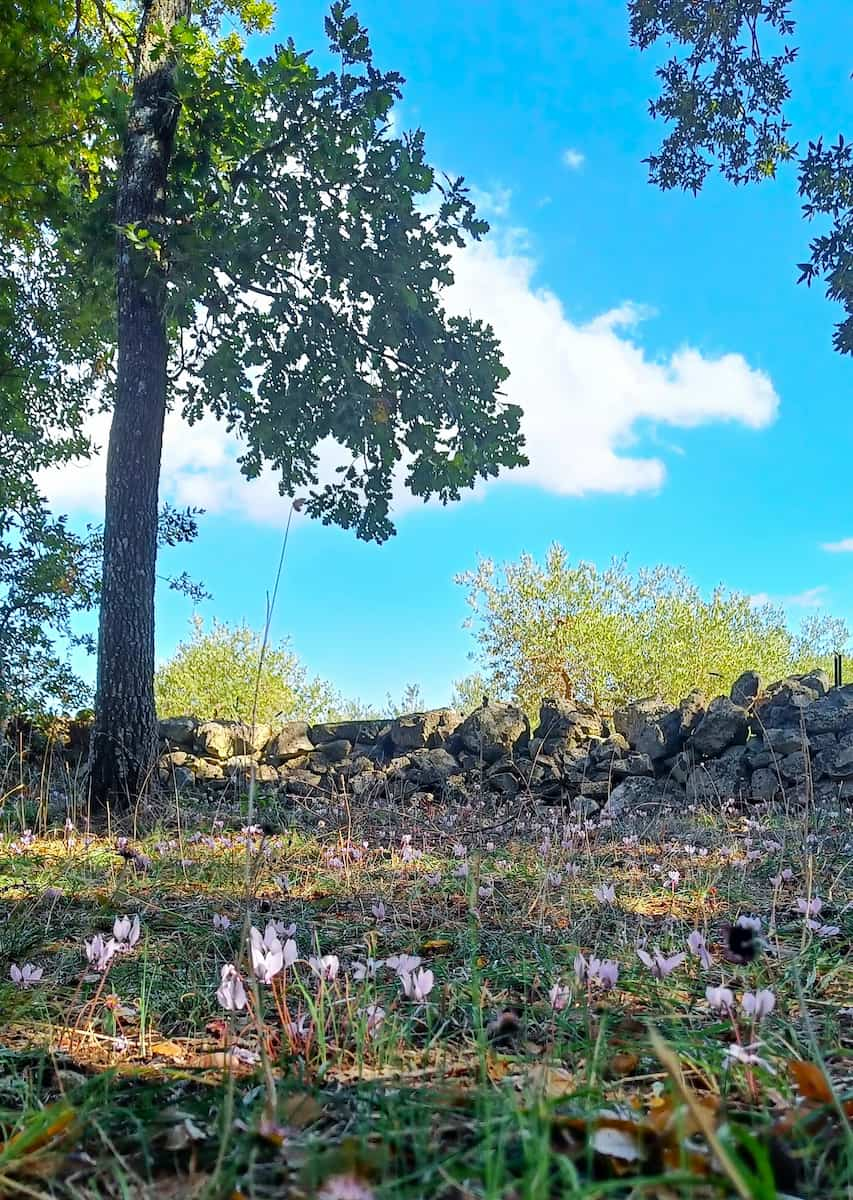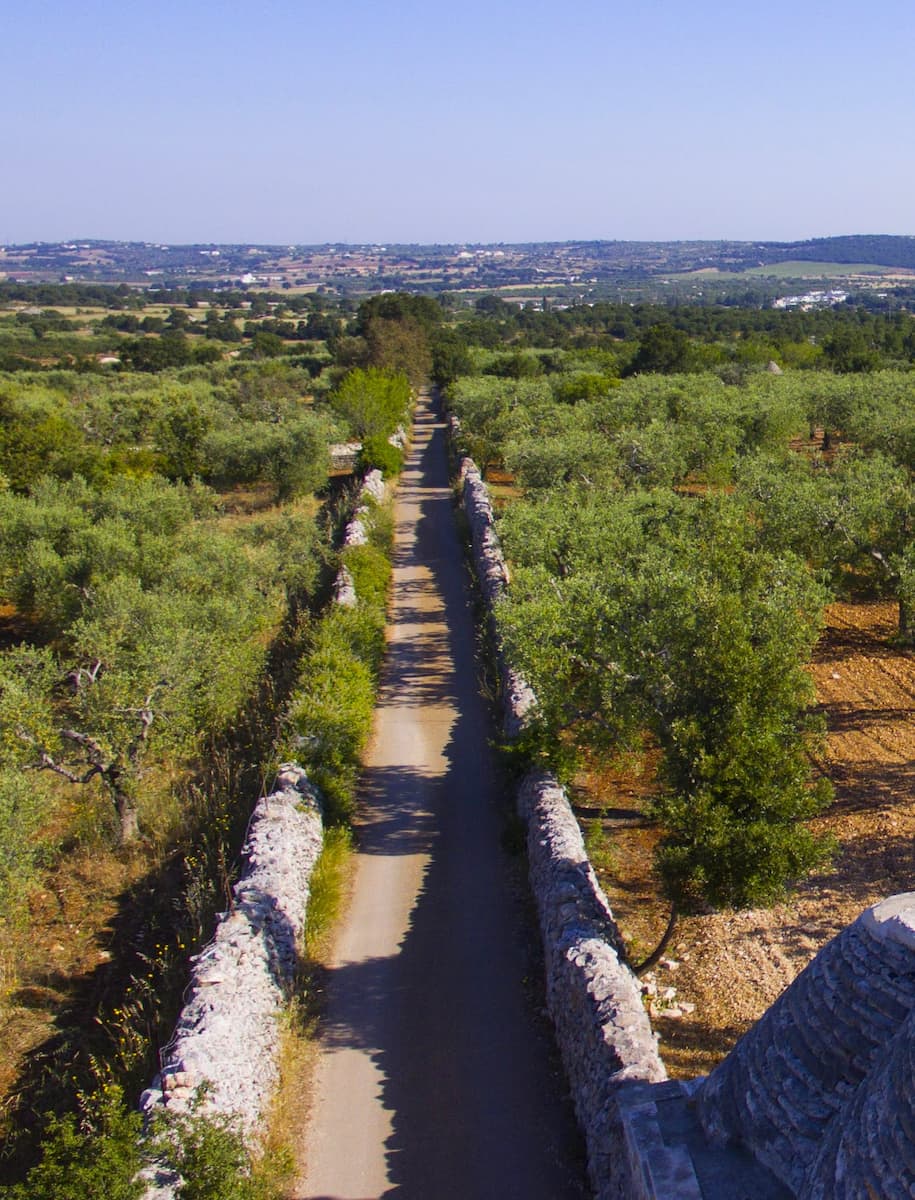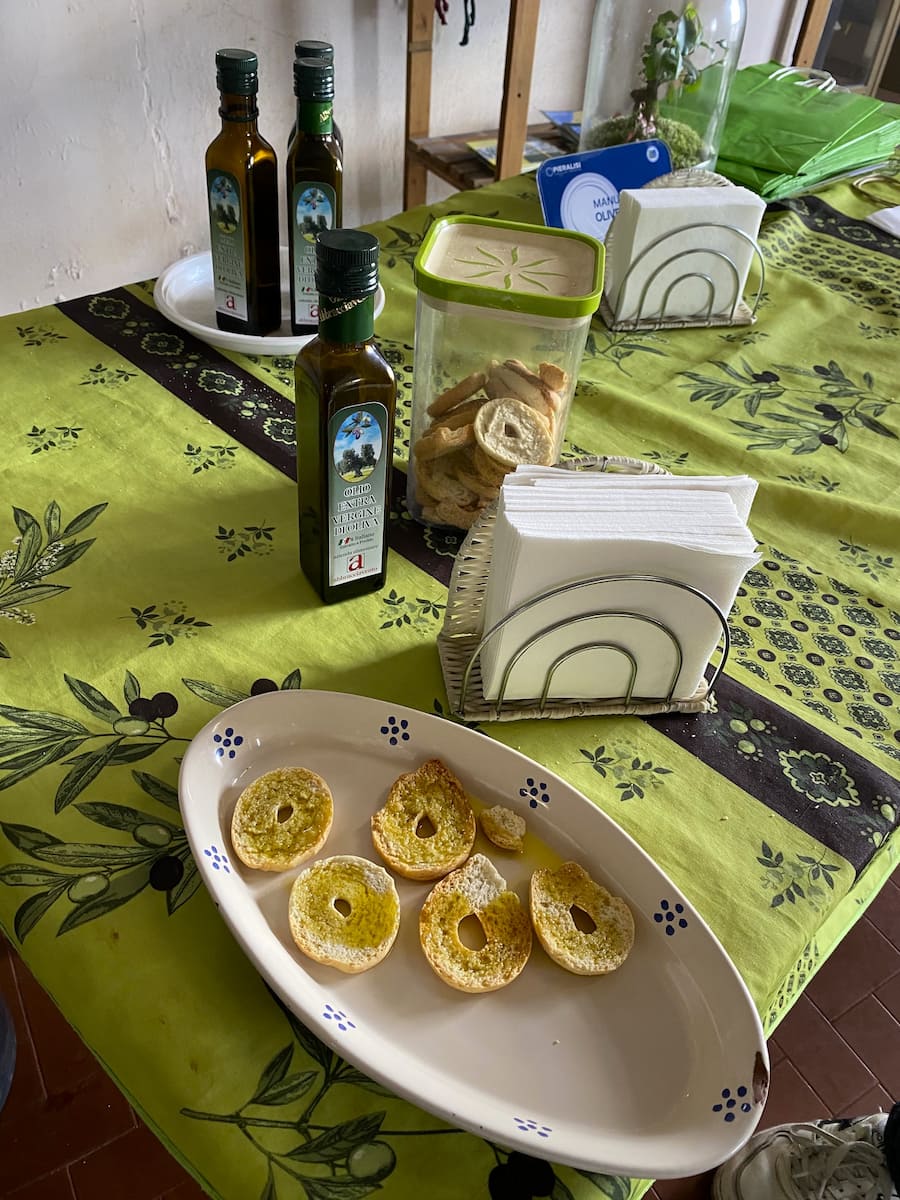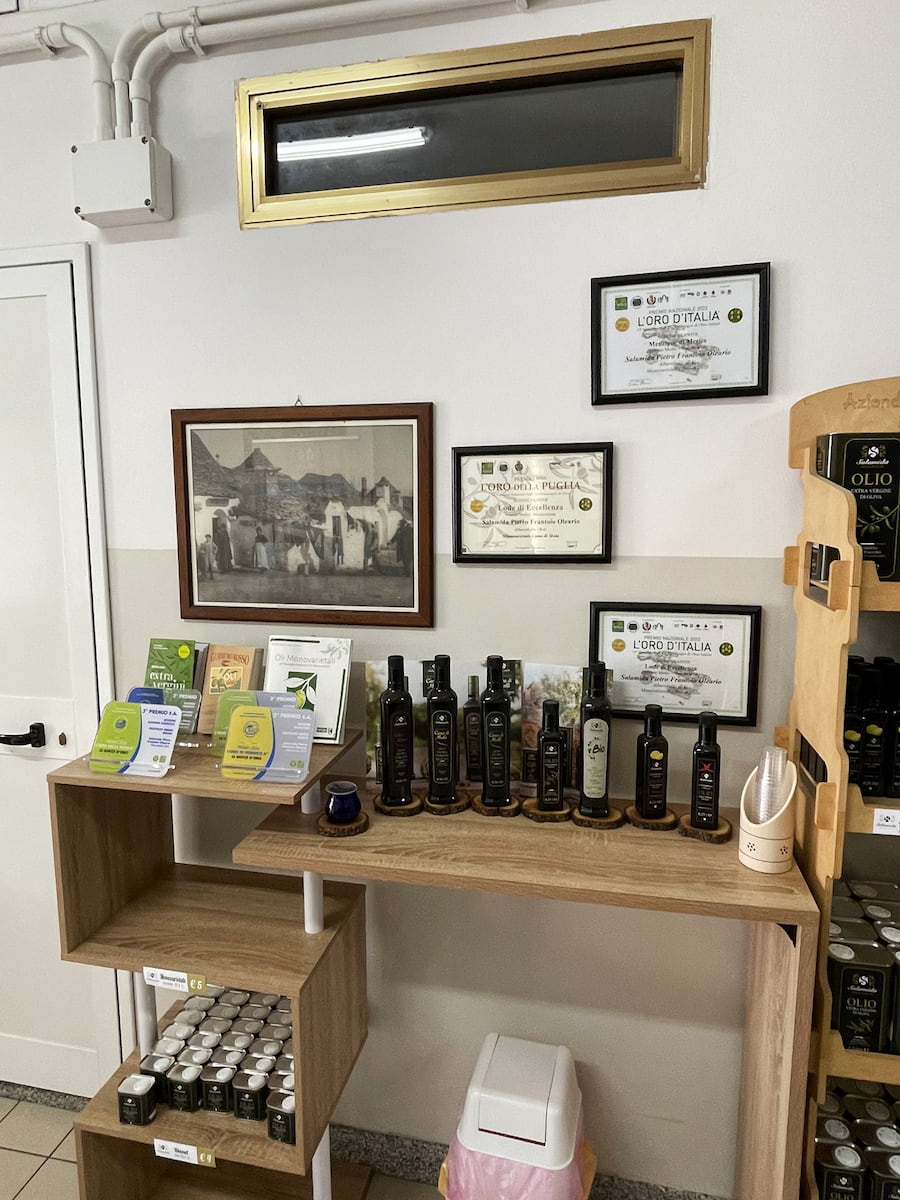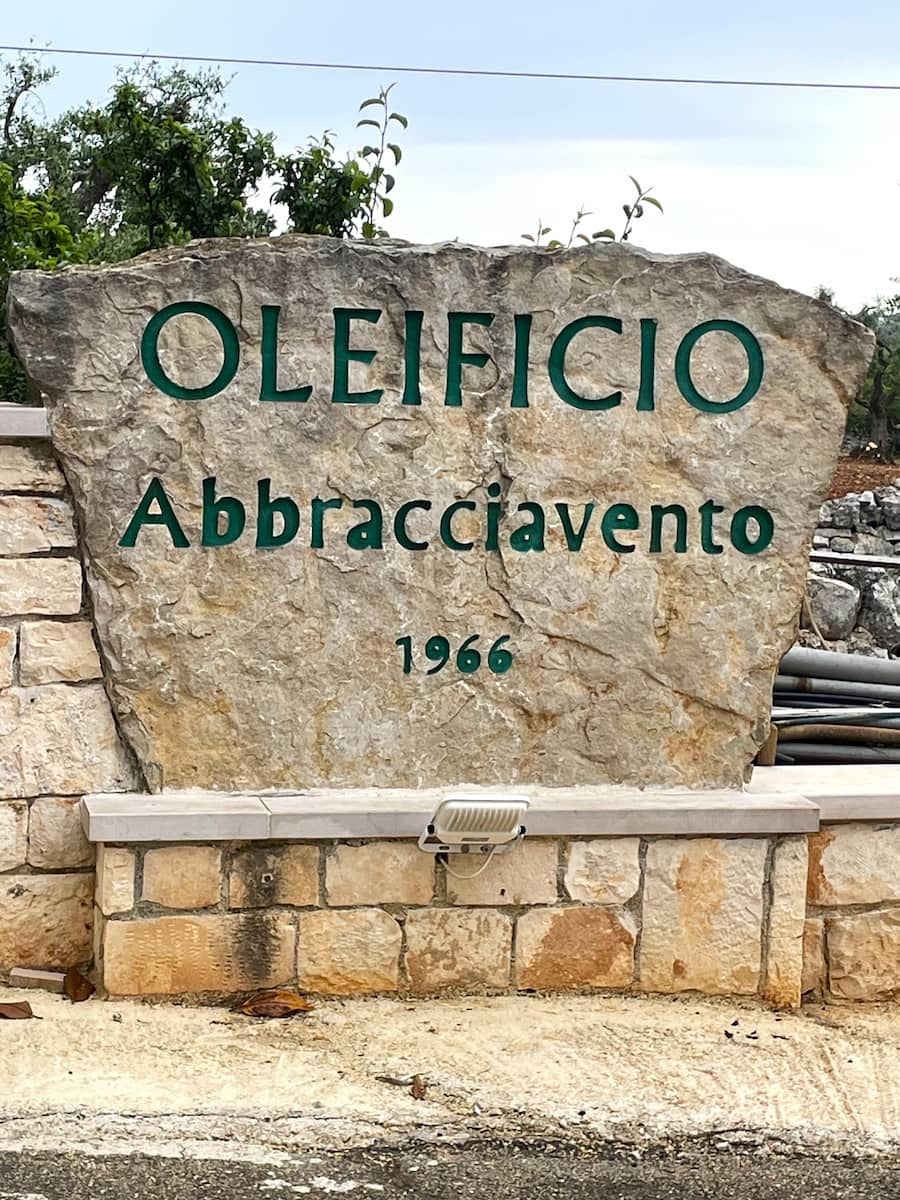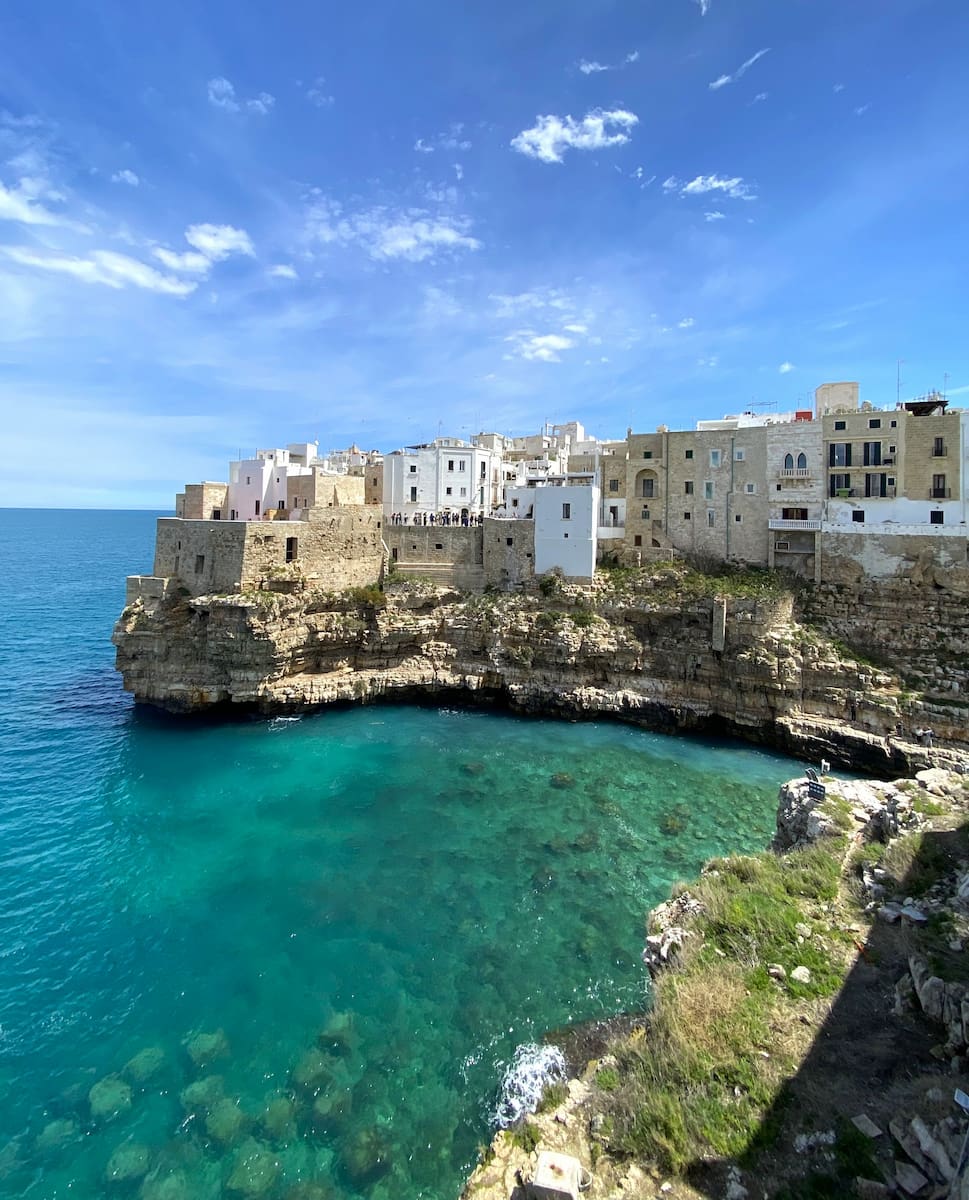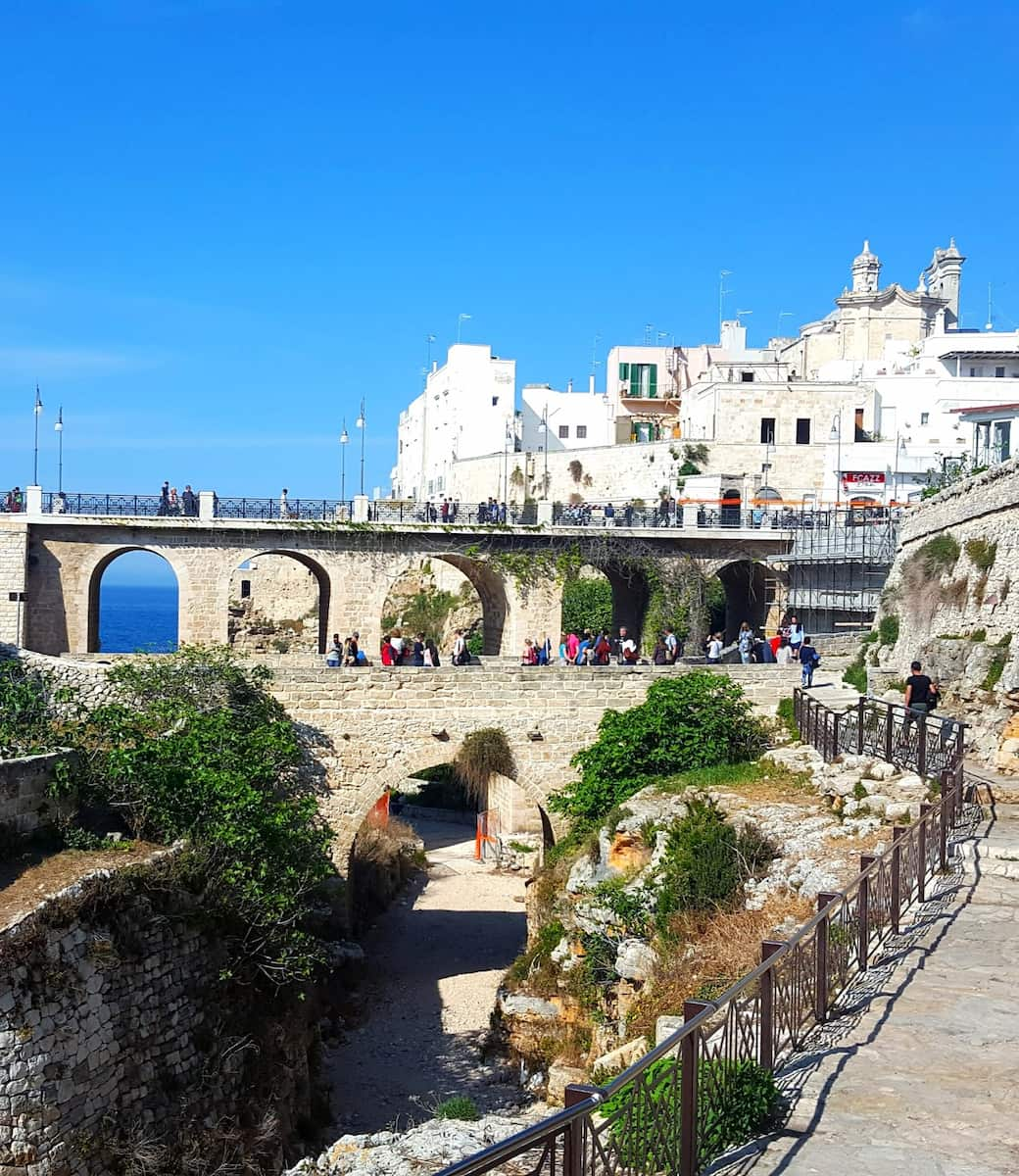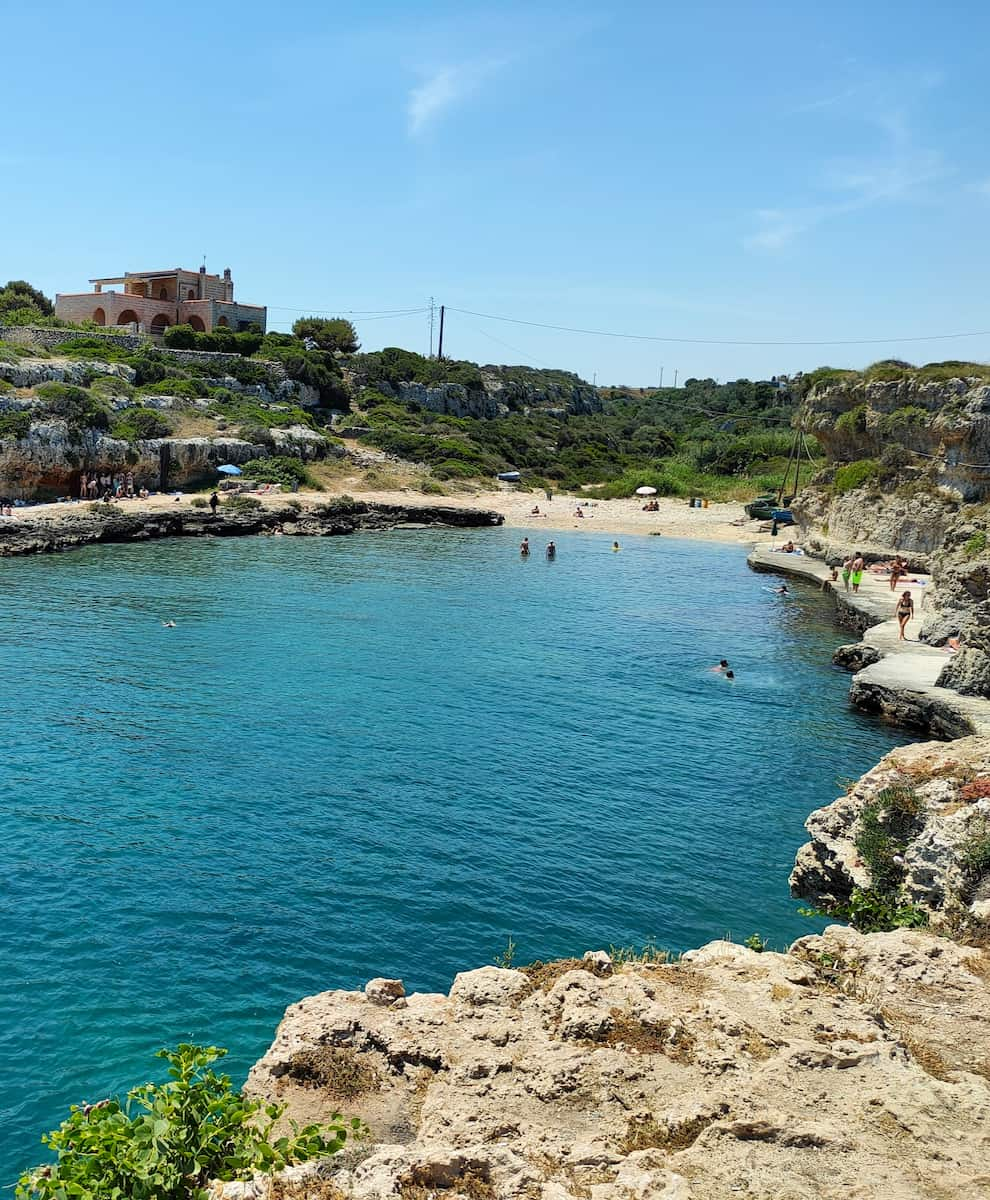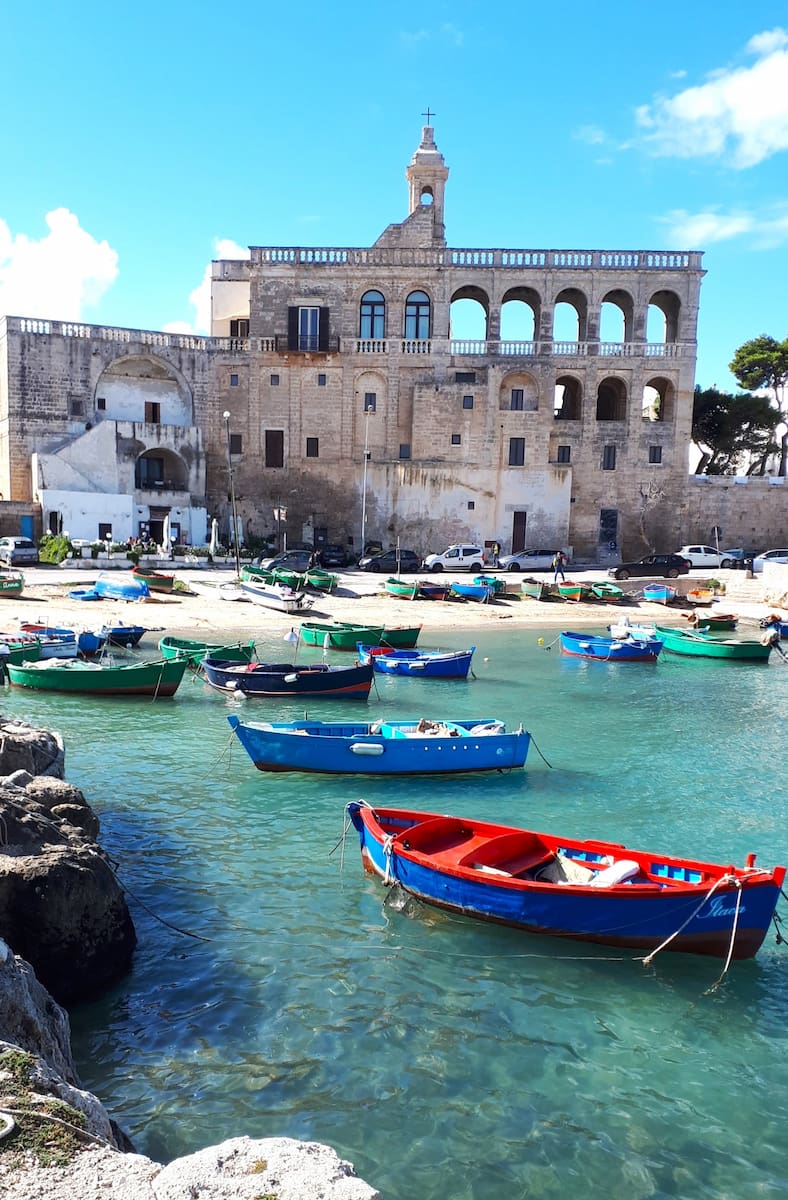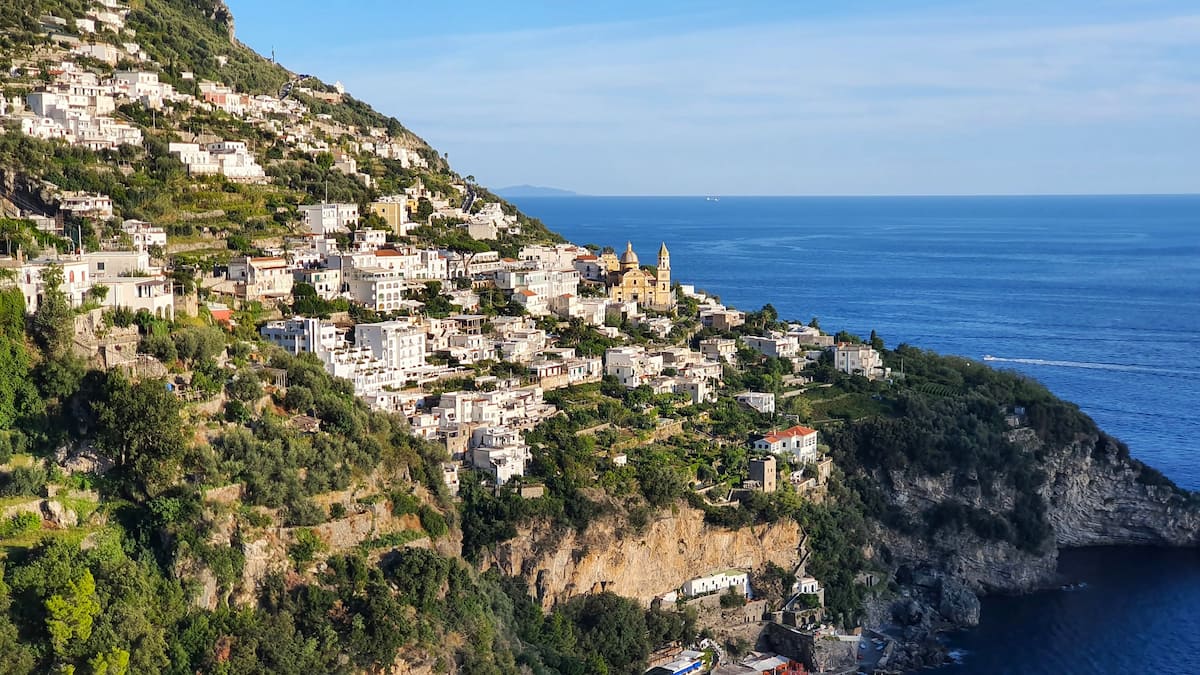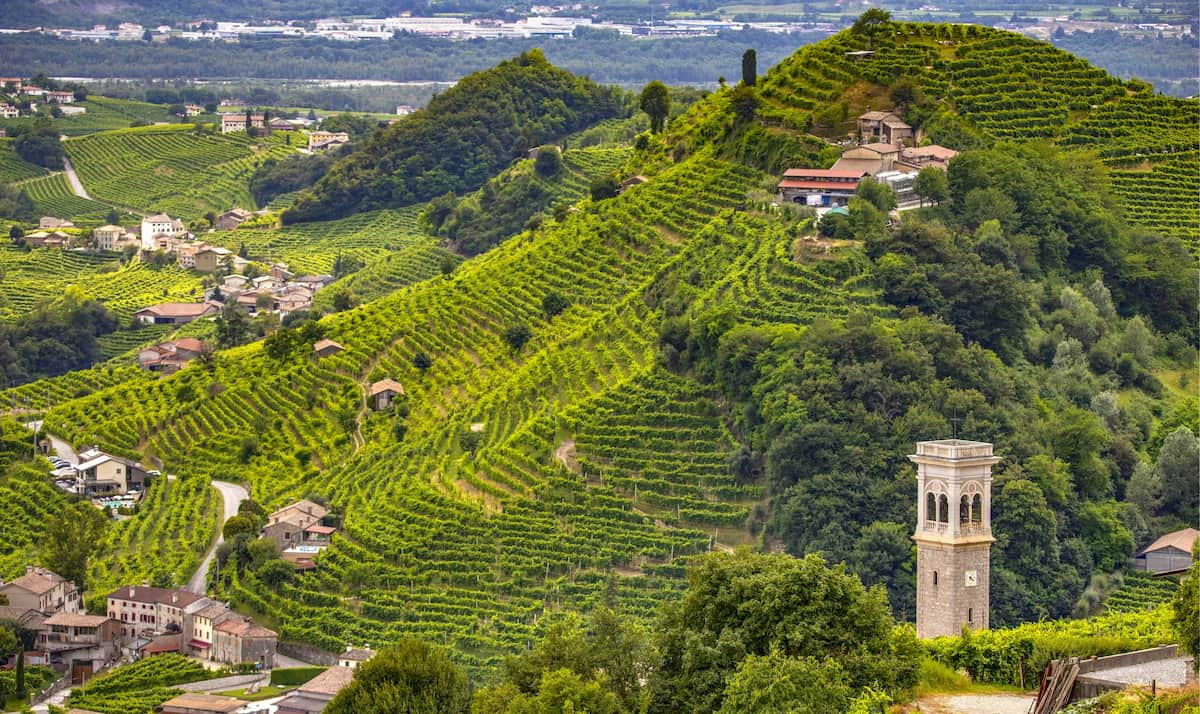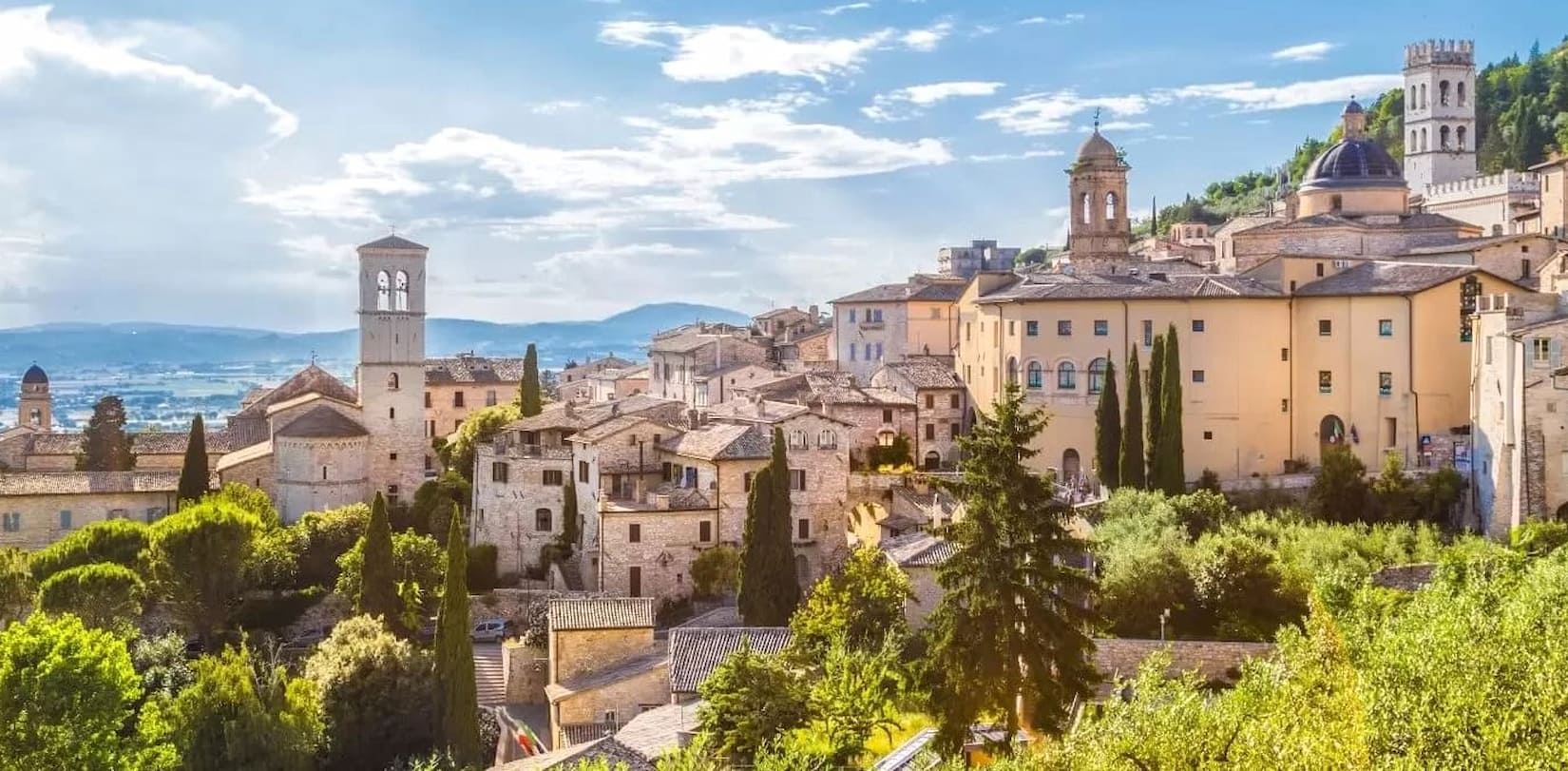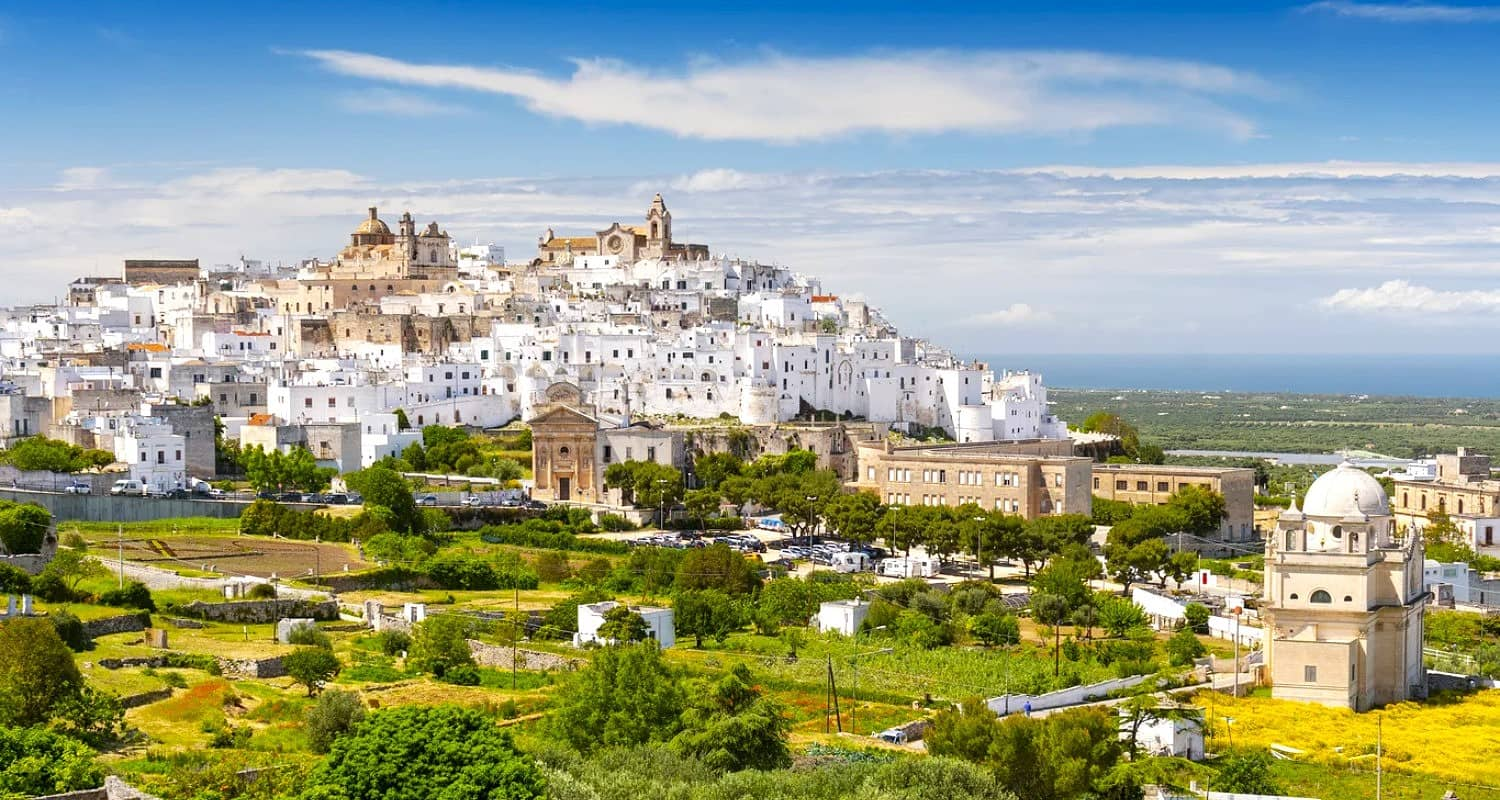Welcome to your ultimate guide to Alberobello—Italy’s most enchanting town of trulli! If you’re dreaming of wandering whitewashed lanes, tasting Puglia’s best food, and soaking up a truly unique atmosphere, you’re in the right place.
This guide is packed with everything you need to know before traveling: from the must-see trulli houses and can’t-miss activities, to the tastiest local restaurants, family-friendly tips, and a few of my own hard-earned secrets.
🏡 Where to stay in Alberobello:
- 💎 Luxury Hotel: Romantic Trulli
- 🏨 4-Star: Hotel Ramapendula
- 🛏️ 3-Star: Il Gabellota Resort
- 💸 Cheap: Hotel Majesty Alberobello
- 🏢 Apartment: Trulli Resort Monte Pasubio Trulli bbalberobellocom
- 👨👩👧👦 For Families: Charming Trulli
- 🏩 For Couples: Dimore Dalle Zie
👩🏻 Best guided tours:
- Visita guidata dei Trulli di Alberobello from € 16 (⭐️ 4.8/5)
- Guided Walking Tour of Alberobello Walk through the Trulli from € 18 (⭐️ 4.9/5)
- Alberobello: 2-Hour Guided Trulli Tour from € 20 (⭐️ 4.8/5)
- Private guided tour in Alberobello - discovering the trulli from € 110 (⭐️ 5.0/5)
- Alberobello private walking tour with gelato tasting from € 70 (⭐️ 5.0/5)
Best Things To Do in Alberobello
1. Trullo Sovrano
Architectural Marvel. I couldn’t believe my eyes when I first stepped into Trullo Sovrano, Alberobello’s only two-story trullo. Standing 14 meters tall with its impressive conical roof, this UNESCO-listed treasure immediately transported me back to the 18th century. The moment I paid my €2 entrance fee (an absolute bargain!), I was greeted by a series of rounded rooms recreated to showcase authentic trullo life – from the cozy bedroom to the rustic kitchen.
Historical Significance. What fascinated me most about Trullo Sovrano wasn’t just its unique architecture but its rebellious history. Built for a wealthy priest named Cataldo Perta, this structure boldly used mortar in its construction – a direct violation of the feudal rules of the time. Walking through its stone doorways, I could feel the weight of its historical importance as the first building to challenge the restrictive building practices that had dominated Alberobello for centuries.
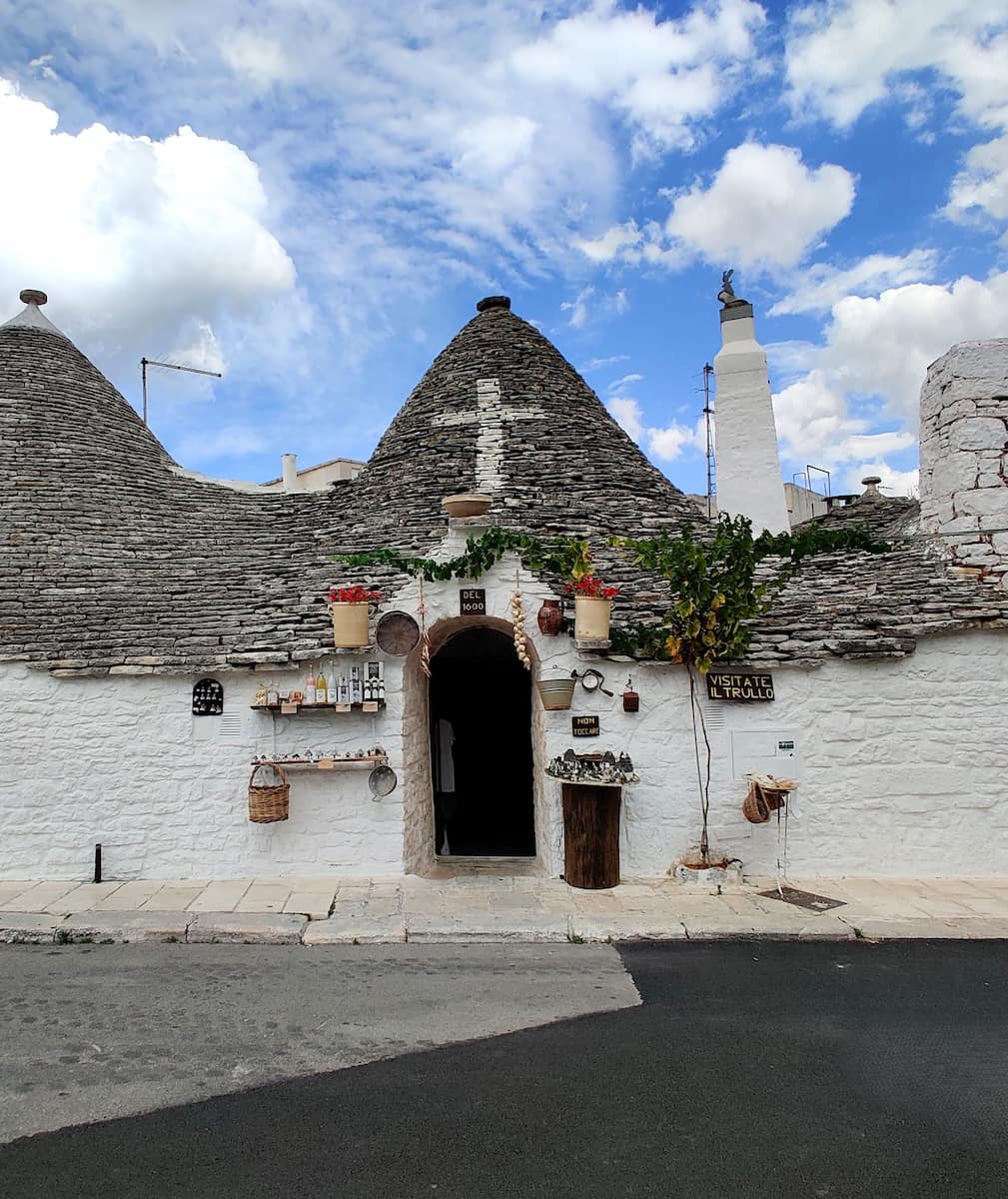
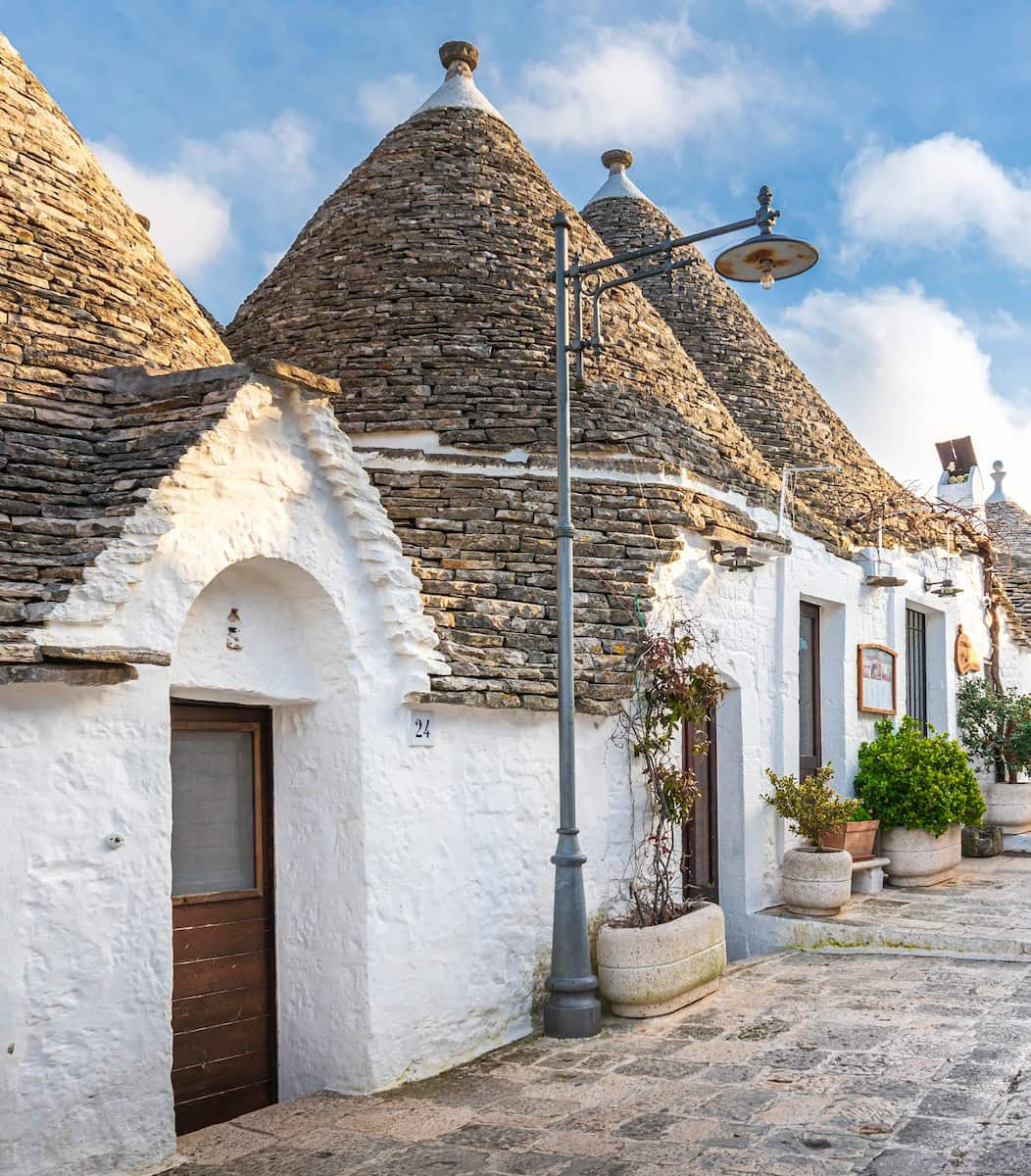
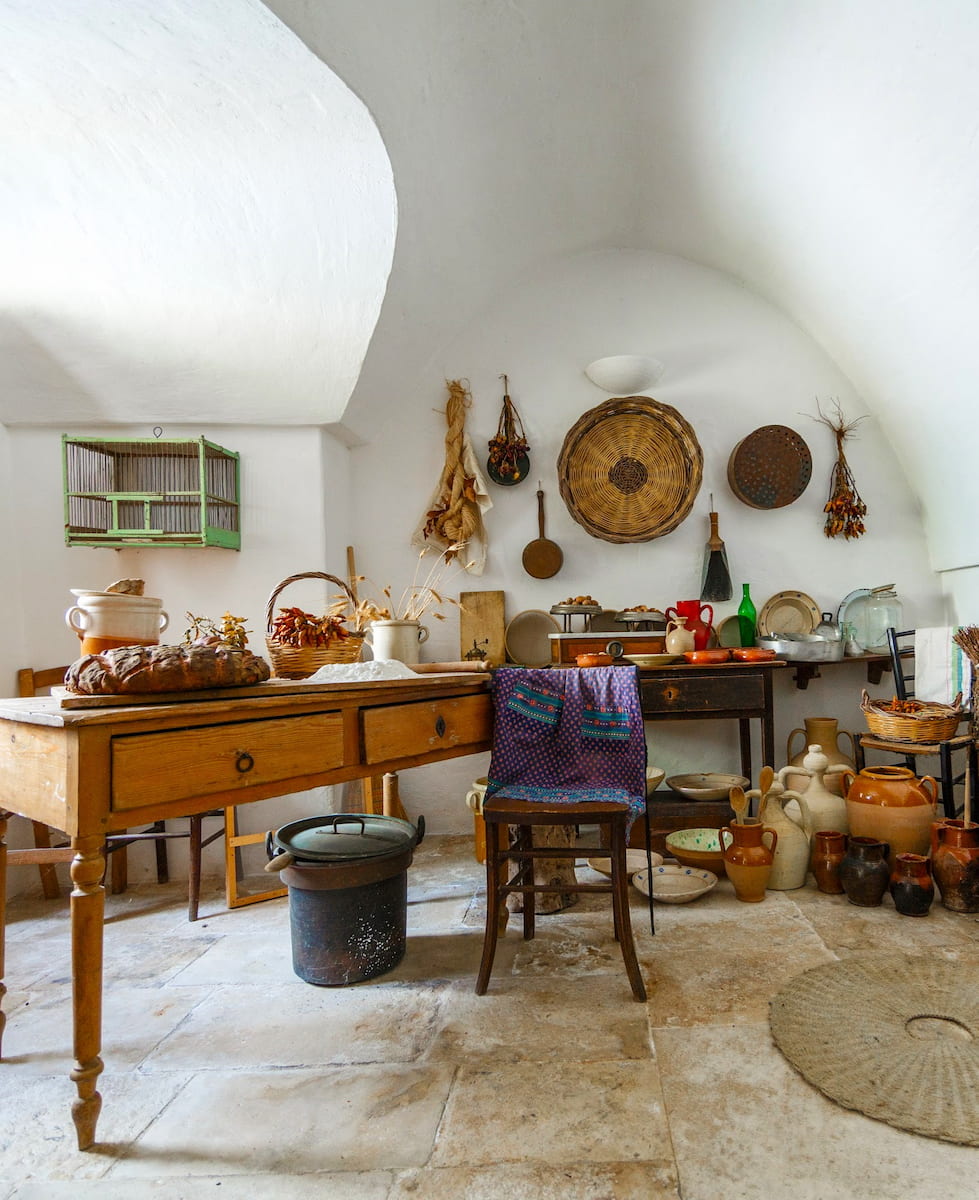
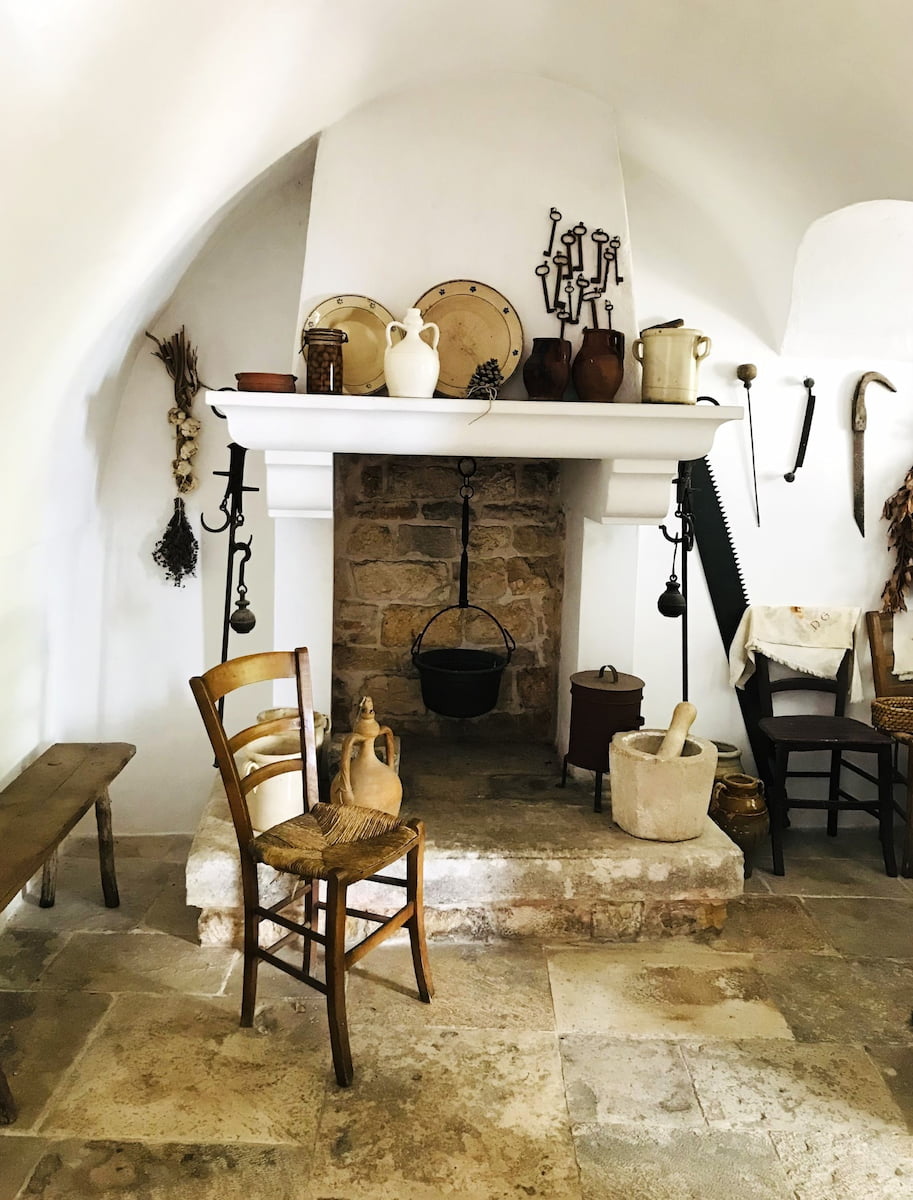
Practical Experience. My advice is to visit early on a weekday morning to avoid the tour groups that flood in around midday. The interior is surprisingly cool even on hot summer days, making it a refreshing escape from Puglia’s midday heat. Don’t rush – take time to examine the antique furniture and traditional household items that offer genuine insight into how families once lived in these unique dwellings.
| Trullo Sovrano Details | Information |
|---|---|
| Entrance Fee | €2 adults / €1 children under 12 (about $2.20 USD) |
| Opening Hours | 10:00 AM – 12:45 PM, 3:30 PM – 6:30 PM |
| Location | Piazza Sacramento 10, Alberobello |
⭐ Best tours
- Visita guidata dei Trulli di Alberobello – The UNESCO-listed town of Alberobello is famous for its unique “trulli” dwellings, fairytale-like round stone huts topped with conical roofs that are only found in this area of Puglia. Explore the largest concentration of “trulli” with this guided tour through Alberobello’s Rione Monti historic district, home to more than 1,000 of these picturesque buildings. Learn about their history and construction, stopping to visit the Trullo Sovrano and the Church of Sant’Antonio.
- Guided Walking Tour of Alberobello Walk through the Trulli – Do not miss the opportunity to live a unique experience in Alberobello! Our walking tour will take you into the heart of this charming village, a UNESCO World Heritage Site, famous for its trulli. You will stroll through picturesque streets, discovering the fascinating architecture and history that has made Alberobello so special.
2. Trullo Siamese
Unique Design. The moment I spotted Trullo Siamese among the sea of white-coned trulli in Rione Monti, I knew it was special. This fascinating structure features two connected domes sharing a single roof – hence the “Siamese” name. What makes it truly unique is that despite being one building, it has two separate entrances leading to distinct living spaces. I spent nearly an hour examining its unusual architecture and snapping photos from different angles to capture its distinctive silhouette.
Romantic Legend. The local shopkeeper shared the captivating story behind this architectural oddity – a tale of two brothers who fell in love with the same woman. According to legend, tradition dictated the woman be promised to the elder brother, but her heart belonged to the younger one. The resulting tension led to the trullo being divided in half, with each brother claiming their own entrance and living space. Whether true or not, this romantic drama adds an emotional layer to what might otherwise be just another stone building.
Shopping Experience. Today, Trullo Siamese houses a charming souvenir shop where I found some of the most authentic handicrafts in town. Unlike many tourist traps selling mass-produced items, this shop offers handcrafted ceramics and locally made trinkets. The friendly owner, Mr. Albano, was happy to explain the symbolism behind the traditional trulli symbols painted on many souvenirs. His passion for preserving local culture made the shopping experience educational as well as enjoyable.
| Trullo Siamese Details | Information |
|---|---|
| Entrance Fee | Free to view exterior |
| Opening Hours | 9:00 AM – 10:00 PM daily |
| Location | Via Monte Pasubio 6, Rione Monti, Alberobello |
⭐ Best activities
- Alberobello: 2-Hour Guided Trulli Tour – Discover the wonders of the UNESCO World Heritage Listed Alberobello with a local guide. Marvel at the famous Trulli buildings, then stroll the city’s picturesque streets as you visit iconic landmarks and learn about Alberobello’s unique history.
3. Chiesa Parrocchiale di Sant’Antonio da Padova
Architectural Uniqueness. Walking up the hill to Sant’Antonio da Padova Church, I was immediately struck by its distinctive silhouette. Built entirely in the trullo style with a conical stone roof, it’s the only church in the world constructed using traditional trulli architecture. This Greek cross church represents a perfect blend of religious significance and local building traditions. The stone façade gleams brilliantly in the Puglian sunshine, creating a postcard-perfect scene that I couldn’t stop photographing.
Interior Atmosphere. Stepping inside, I was enveloped by a sense of peaceful reverence that contrasted with the bustling tourist areas nearby. The cool interior provided welcome relief from the heat, while the simple yet elegant design created a space that felt both humble and spiritually significant. What impressed me most was how the architects managed to create a spacious, functional church while remaining faithful to trulli building principles.
Cultural Context. My visit coincided with a local celebration, and I witnessed firsthand how this church remains the spiritual heart of Alberobello. Built during a time when the town was transitioning between traditional and modern architecture, Sant’Antonio stands as a symbol of Alberobello’s commitment to preserving its unique cultural heritage. The church’s location at the highest point of Rione Monti is no accident – it literally and figuratively crowns the trulli district, serving as both a landmark and a reminder of the town’s distinctive identity.
| Chiesa di Sant’Antonio Details | Information |
|---|---|
| Entrance Fee | Free |
| Opening Hours | 8:30 AM – 7:00 PM (summer), 8:30 AM – 6:00 PM (winter) |
| Location | Via Monte Pertica 18, Alberobello |
⭐ Best activities
- Private guided tour in Alberobello - discovering the trulli – This private tour will give you the opportunity to visit the famous capital of the trulli, Alberobello, recognized as Unesco World Heritage as extraordinary example of drystone building. It’s a 1 hour and half tour including the highlights of the town, visiting the most charming area of the old town and learning about the origins and traditions of this unique town in Puglia. Ideal if you don’t have so much time to stay.
4. Casa D’Amore
Historical Milestone. When I first approached Casa D’Amore in Piazza Ferdinando IV di Borbone, it didn’t immediately stand out among Alberobello’s more dramatic trulli. However, this modest building represents perhaps the most significant moment in the town’s architectural history. It was the very first structure in Alberobello constructed using mortar – a revolutionary act that marked the town’s liberation from feudal restrictions. The Latin inscription proudly declaring it the “First building erected from royal authority” sent shivers down my spine as I realized I was standing before a symbol of freedom.
Architectural Transition. What fascinated me about Casa D’Amore was seeing the visible transition between building techniques. Looking closely at the walls, I could identify the distinctive reddish cement called “vuolo” mixed with lime – the first proper mortar used in town construction. This building represents the pivotal moment when Alberobello began evolving from temporary, easily dismantled structures to permanent homes. Though less visually striking than conical trulli, Casa D’Amore tells the more profound story of a community claiming its right to build lasting homes.
Modern Function. Today, Casa D’Amore serves as a small art gallery showcasing local artists. I spent a pleasant half-hour browsing the exhibitions, which change regularly throughout the year. The young woman managing the space was exceptionally knowledgeable, offering insights into both the building’s history and the artwork on display. What struck me most was how this historic building continues to serve as a cultural touchpoint for the community – just as it did over two centuries ago when it represented a new beginning for Alberobello.
| Casa D’Amore Details | Information |
|---|---|
| Entrance Fee | Free |
| Opening Hours | 10:00 AM – 1:00 PM, 3:00 PM – 7:00 PM (closed Mondays) |
| Location | Piazza Ferdinando IV di Borbone 3, Alberobello |
⭐ Best activities
- Alberobello private walking tour with gelato tasting – The trulli are an important example of rural architecture that still survives today. The panoramic view on Rione Aia Piccola with its infinite expanse of conical roofs is enchanting. Don’t miss the opportunity to live an authentic experience in Alberobello, discover the unique Apulian ancient constructions, and learn something new about the Italian traditions with a friendly multilingual local guide. At the end of the tour, you will taste one of the best ice cream of the region in a renowned gelateria.
Things To Do in Alberobello With Kids
1. Territory Museum House Pezzolla
Cultural Immersion. Taking my two young nephews to the Territory Museum “Casa Pezzolla” turned out to be an unexpected hit! Located in Piazza XXVII Maggio, this fascinating complex of 15 interconnected trulli houses offers a perfect blend of education and entertainment for children. What impressed me most was how the museum managed to transform what could have been a boring historical exhibit into an engaging journey through time.
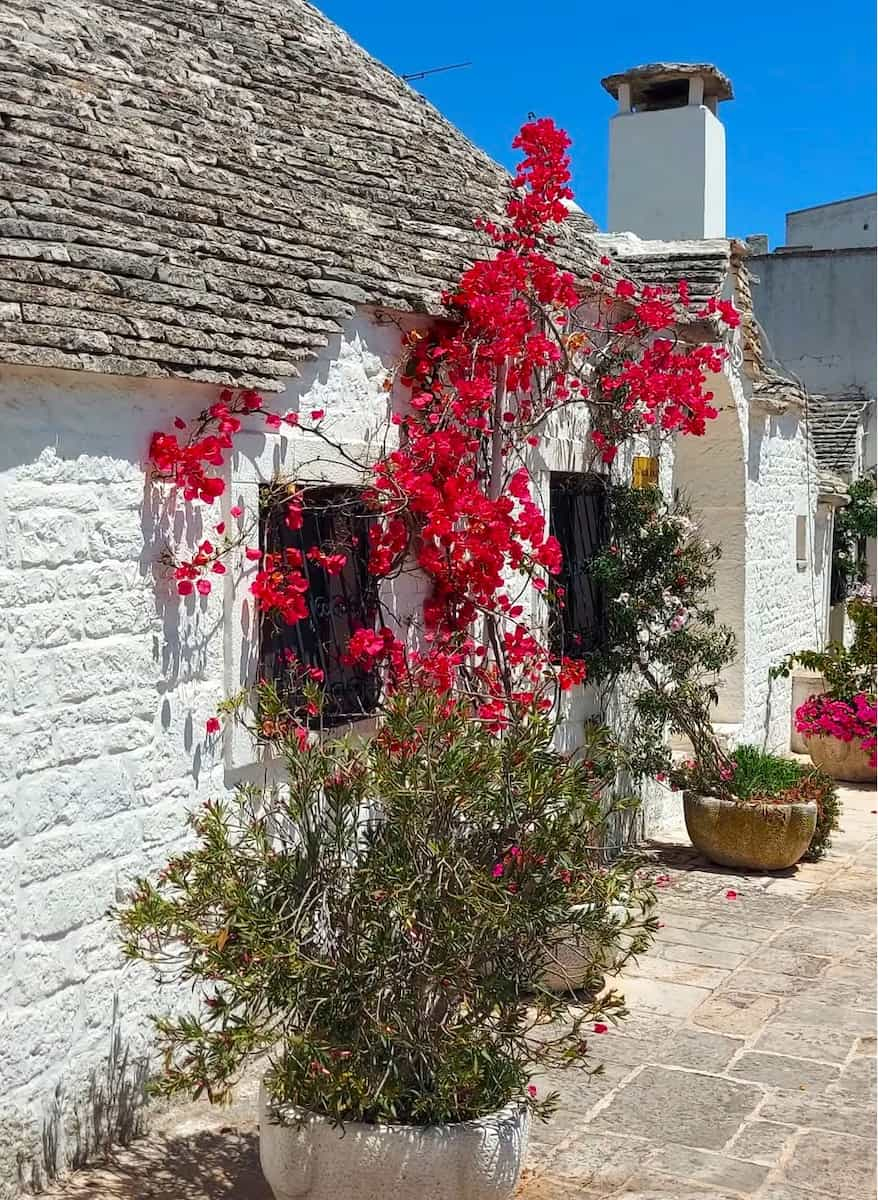
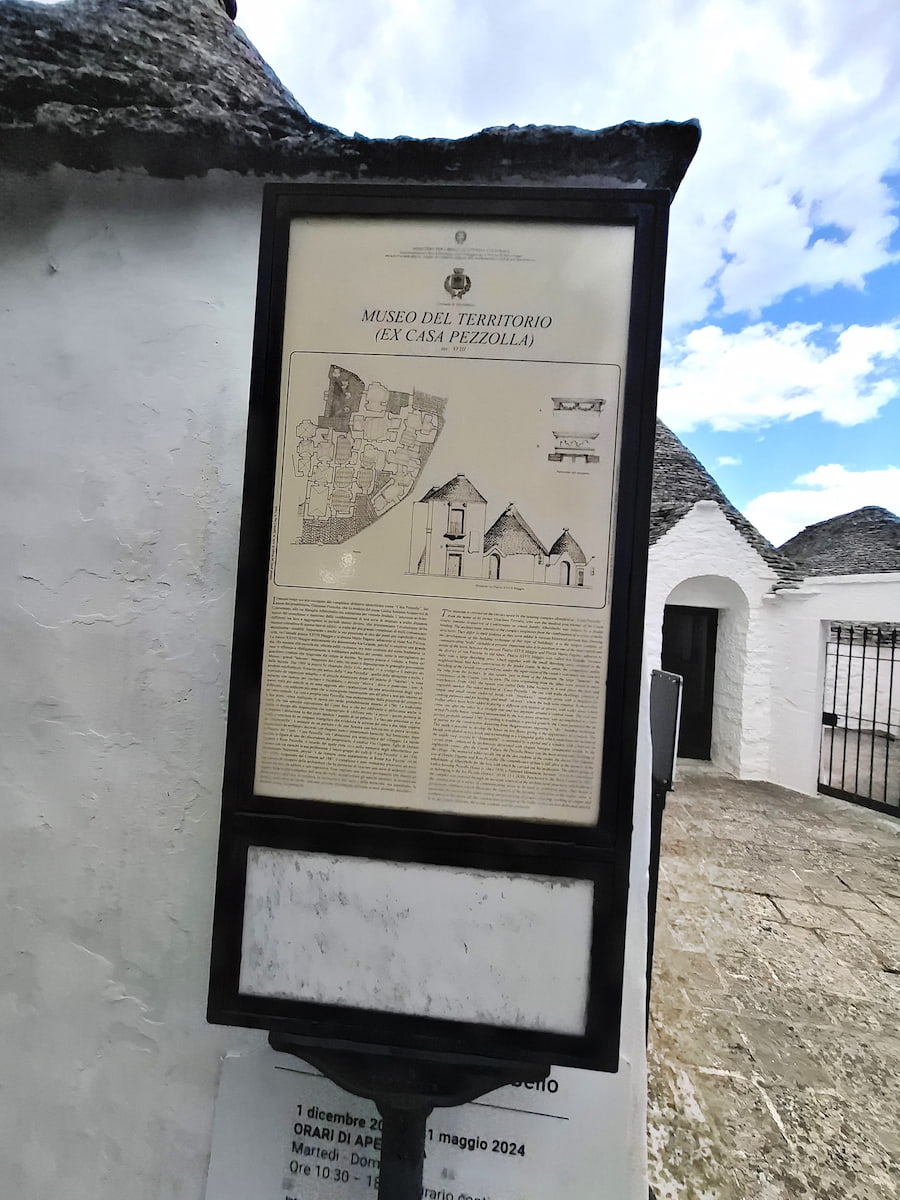

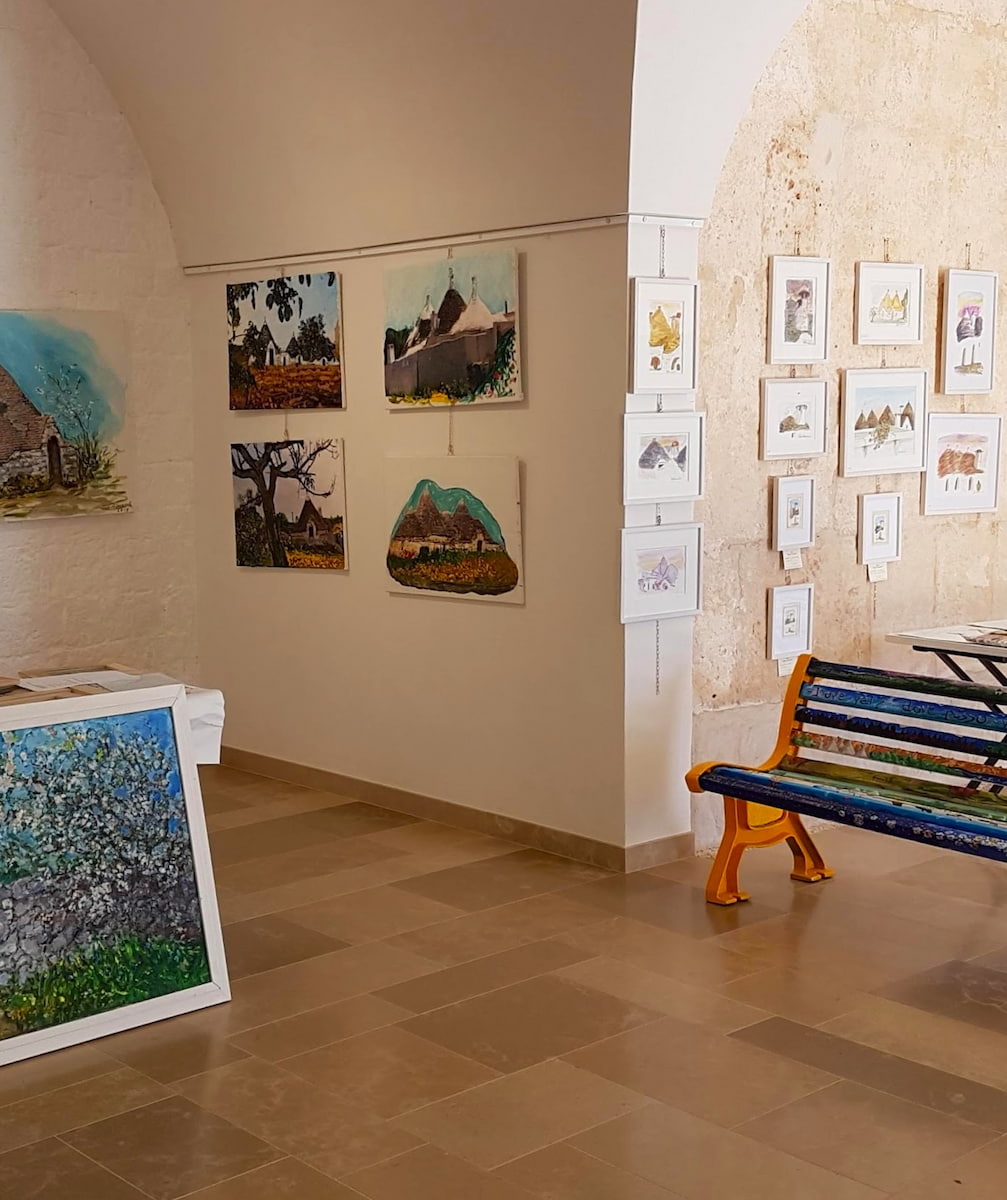
Interactive Learning. The museum’s layout is perfect for curious kids who love to explore. Each of the 15 trulli sections houses different exhibits focusing on local history, agricultural practices, and daily life in old Alberobello. I noticed how my nephews’ eyes lit up when they discovered the displays of traditional farming tools and household items – things they’d never seen before.
Family-Friendly Experience. What makes this museum particularly suitable for families is its manageable size. Unlike larger museums that can overwhelm children, we completed our visit in about an hour – the perfect duration before the kids’ attention started to wane. The cool interior of the trulli provided a welcome respite from the midday Puglian heat, making it an ideal activity for those hot summer afternoons when outdoor sightseeing becomes unbearable.
| Territory Museum Details | Information |
|---|---|
| Entrance Fee | €4 adults / €2 children (about $4.40 USD) |
| Opening Hours | 10:00 AM – 8:00 PM daily (last entry 7:30 PM) |
| Location | Piazza XXVII Maggio, Alberobello |
⭐ Best activities
- Skip the Line: Trullo Sovrano Admission Ticket – Alberobello’s UNESCO-listed “trullo” dwellings are among the most unique sights in Puglia, and the Trullo Sovrano is the town’s crown jewel. With this advance ticket, visit the only trullo built on two levels and experience what is was like to live here as you take in the re-created period living area, kitchen, and bedroom. Stand beneath the conical roof that reaches 45 feet (14 meters) and admire the charming architecture.
2. Acqua Splash – Alberobello
Cooling Adventure. After days of trulli-hopping in the summer heat, Acqua Splash water park was exactly what my family needed! Located just outside Alberobello’s center, this modest-sized water park became the highlight of our kids’ trip to Puglia. While it’s certainly not on the scale of major European water parks, its manageable size actually made it perfect for families with younger children. I could keep an eye on my kids from almost anywhere in the park, which gave me a rare chance to relax while they splashed around happily in the various pools and slides.
Water Attractions. The park features several water slides of varying intensity, from gentle options suitable for toddlers to more thrilling rides that had my 10-year-old squealing with delight. What impressed me was the cleanliness of the facilities – the pools were well-maintained and the water was refreshingly clear. The children’s area with its shallow pools and mini slides was particularly well designed, allowing younger kids to enjoy water fun safely.
Practical Comforts. Beyond the water attractions, I appreciated the thoughtful amenities that made our day comfortable. Clean changing rooms, affordable food options (the pizza was surprisingly good!), and plenty of shaded areas for breaks from the sun. The staff enforced regular safety breaks when the slides closed, which initially disappointed the kids but actually provided a welcome opportunity for lunch and rest.
| Acqua Splash Details | Information |
|---|---|
| Entrance Fee | €14 adults / €9 children in high season |
| Opening Hours | 9:00 AM – 6:00 PM daily |
| Location | Contrada Popoleto, Alberobello |
Free Things To Do in Alberobello
1. Trulli, Rione Monti
Magical Morning Walks. I arrived in Rione Monti just after sunrise, and the experience was nothing short of magical. Without the crowds that flood in by mid-morning, I had the fairytale-like streets almost entirely to myself. The early morning light cast a golden glow on the whitewashed walls of the trulli, creating perfect photo opportunities at every turn. Walking up the hilly streets, I could hear locals beginning their day – shutters opening, the distant aroma of fresh coffee brewing, and occasional Italian conversations floating through open windows.
Architectural Wonders. What struck me most about Rione Monti was the sheer concentration of these unique structures – over 1,000 trulli line the narrow streets and alleyways of this UNESCO World Heritage zone. Each conical roof tells its own story, many adorned with mysterious symbols painted in white limestone. I spent hours examining the different construction techniques, noting how the stones were perfectly stacked without mortar, a building method dating back centuries.
Cultural Immersion. By mid-morning, I watched as shop owners began opening their trulli-housed businesses, carefully arranging handcrafted souvenirs outside their doors. Though many shops sell typical tourist items, I discovered several authentic artisans creating olive wood carvings and handwoven textiles. The shopkeepers were surprisingly friendly even when I wasn’t buying anything, often sharing fascinating stories about the history of their particular trullo.
| Rione Monti Details | Information |
|---|---|
| Entrance Fee | Free |
| Best Hours | 7:00 AM – 9:00 AM or after 6:00 PM |
| Location | Northwest section of Alberobello, accessible from Via Indipendenza |
2. Walk the Streets
Sensory Experience. Walking through Alberobello’s streets engages all your senses in a way few other Italian towns can match. The tactile experience of running my fingers along the rough limestone walls, the visual delight of brilliant white structures against the blue Puglian sky, and the subtle scent of jasmine and bougainvillea that spill from planters outside many trulli – it all combines to create a deeply immersive experience. I found myself slowing down naturally, my usual hurried pace giving way to a more contemplative stroll as I absorbed the unique atmosphere.
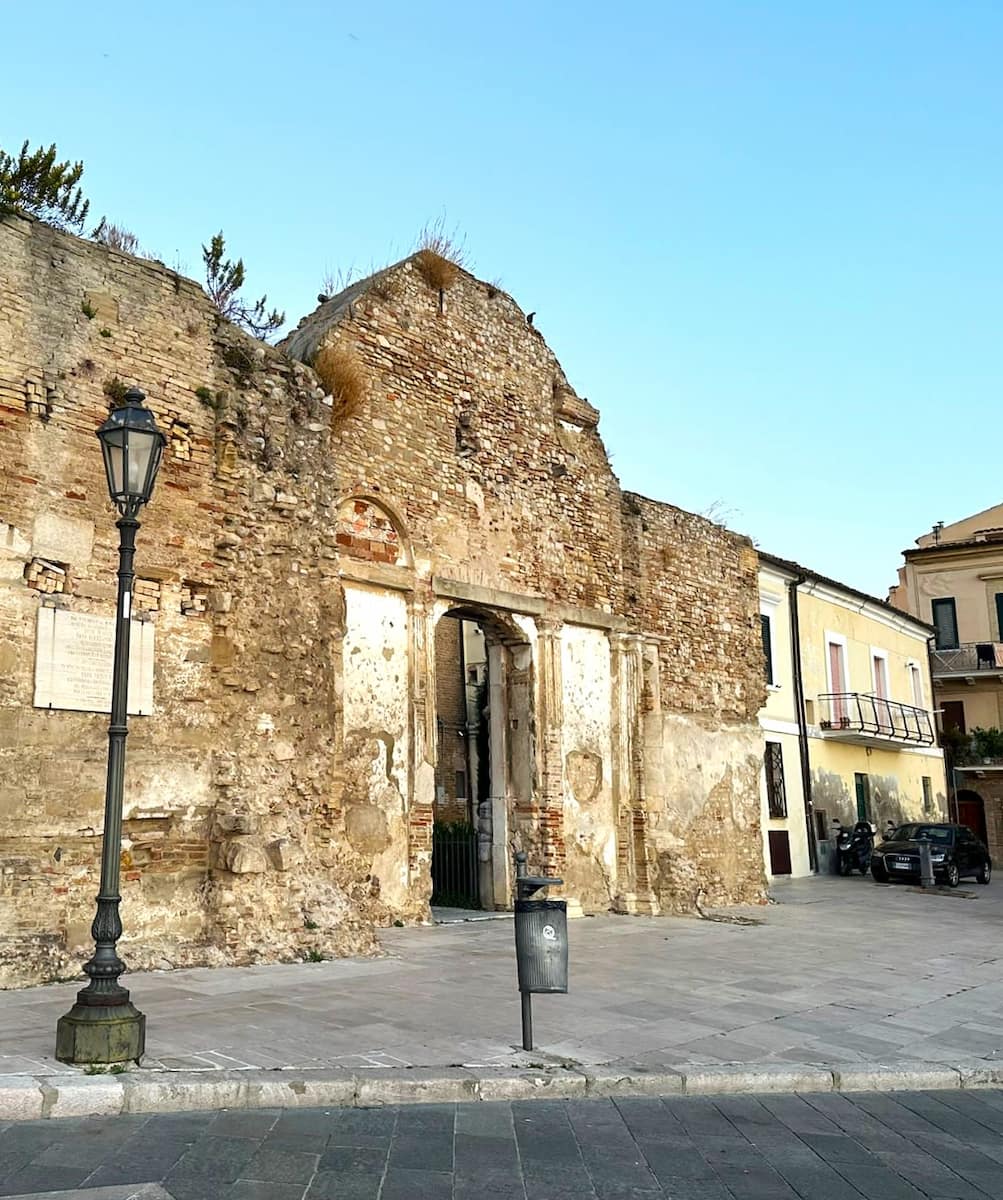
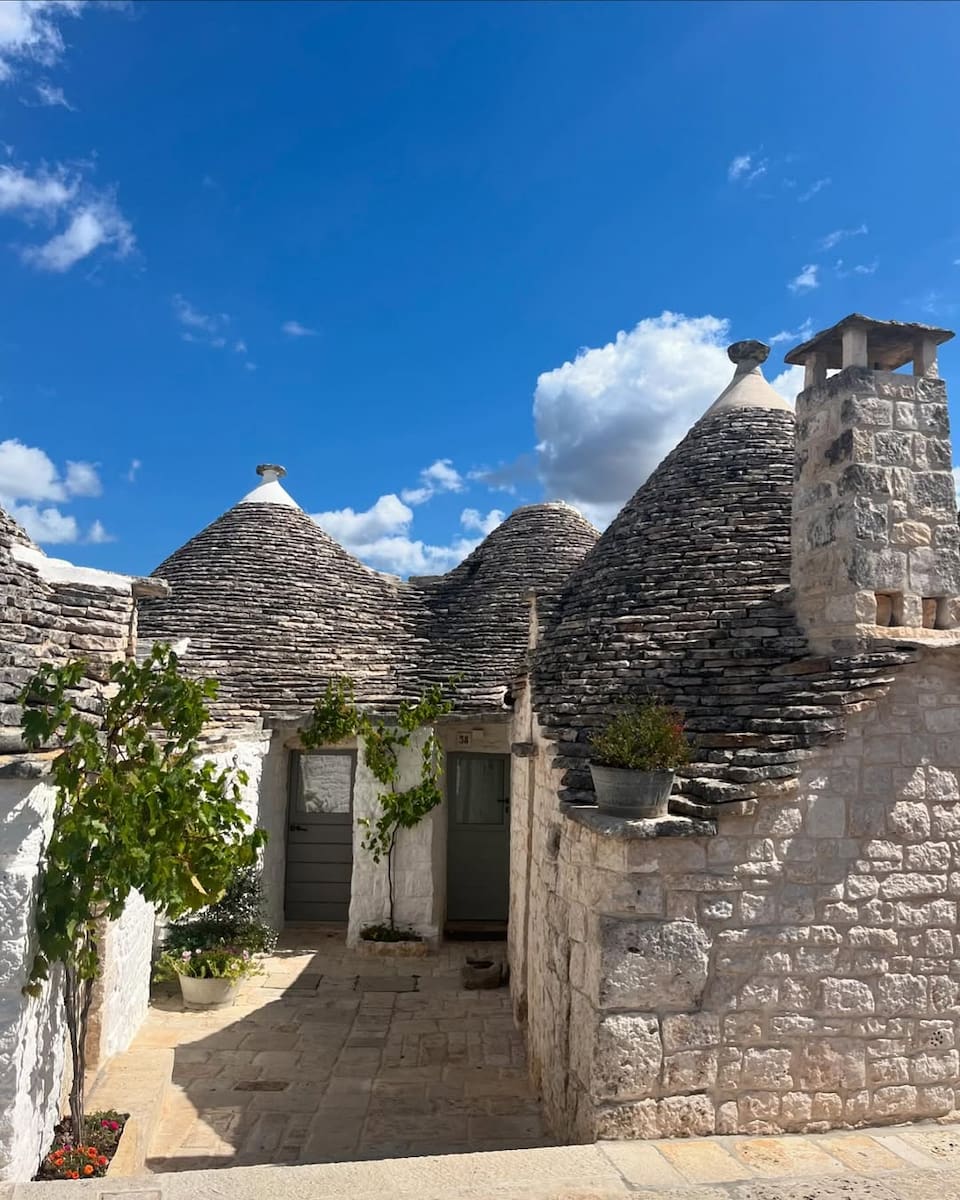
Hidden Gems. The true joy of walking Alberobello comes from discovering the less-visited corners. While most tourists stick to the main streets of Rione Monti, I ventured into Rione Aia Piccola, a smaller but more authentic residential trulli zone. Here, locals still live in these distinctive homes, hanging laundry between trulli and tending to small gardens. The absence of souvenir shops and the hustle-bustle of the main tourist area made this neighborhood feel like stepping back in time. I particularly enjoyed the maze of narrow alleyways that seemed to lead nowhere but always revealed charming vignettes of daily Italian life.
Panoramic Discoveries. My favorite free activity was seeking out the various viewpoints scattered throughout town. The most spectacular view I found was at Belvedere Santa Lucia, a small park with a single large tree and low stone walls. From this vantage point near Rione Aia Piccola, I could see the entire expanse of Rione Monti spread before me – hundreds of conical rooftops creating a scene that looked more like a fantasy film set than a real town. As the sun began to set, the golden light transformed the white trulli into a warm, glowing landscape that had me reaching for my camera again and again.
Seasonal Activities
Christmas
Magical Illuminations. I’ll never forget turning the corner into Rione Monti on a December evening to find hundreds of trulli transformed by twinkling lights. The “Christmas Among the Trulli” festival (December 8 – January 6) creates a fairytale atmosphere unlike anything I’ve experienced elsewhere in Italy. Each conical roof is outlined with delicate white lights, creating a magical landscape that looks like something from a children’s storybook. The contrast between the ancient stone structures and modern illuminations creates a uniquely enchanting atmosphere that had me wandering the streets until well past midnight.
Festive Markets. The Christmas market in Piazza del Popolo became my evening ritual during my winter visit. Local artisans set up wooden stalls selling traditional Puglian crafts, from hand-carved olive wood nativity scenes to delicate ceramic ornaments shaped like trulli. I spent hours browsing the stalls, warming my hands on cups of vin brulé (mulled wine) that cost just €3. The aroma of roasting chestnuts and freshly fried cartellate (honey-soaked pastries) filled the crisp evening air. What impressed me most was the authenticity – these weren’t mass-produced souvenirs but genuine local crafts made by the vendors themselves.
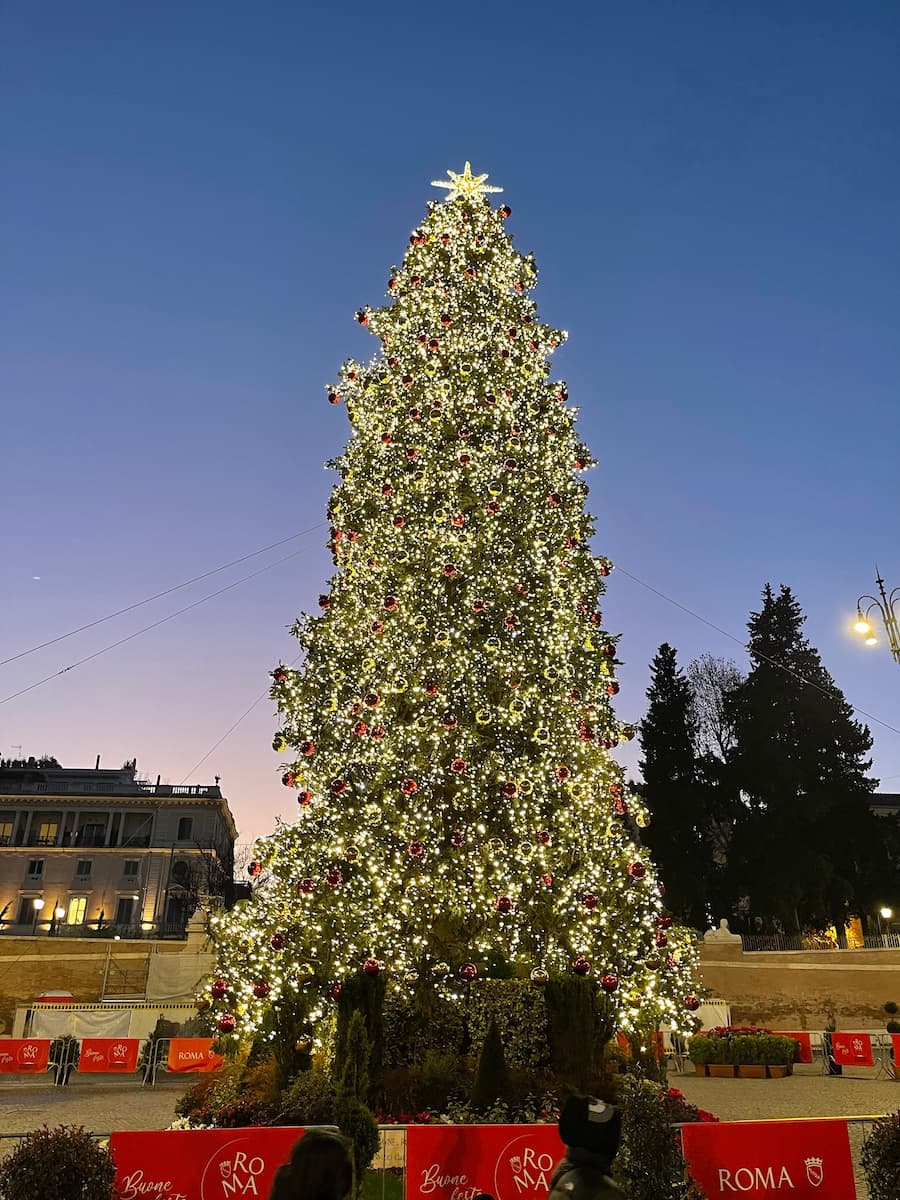
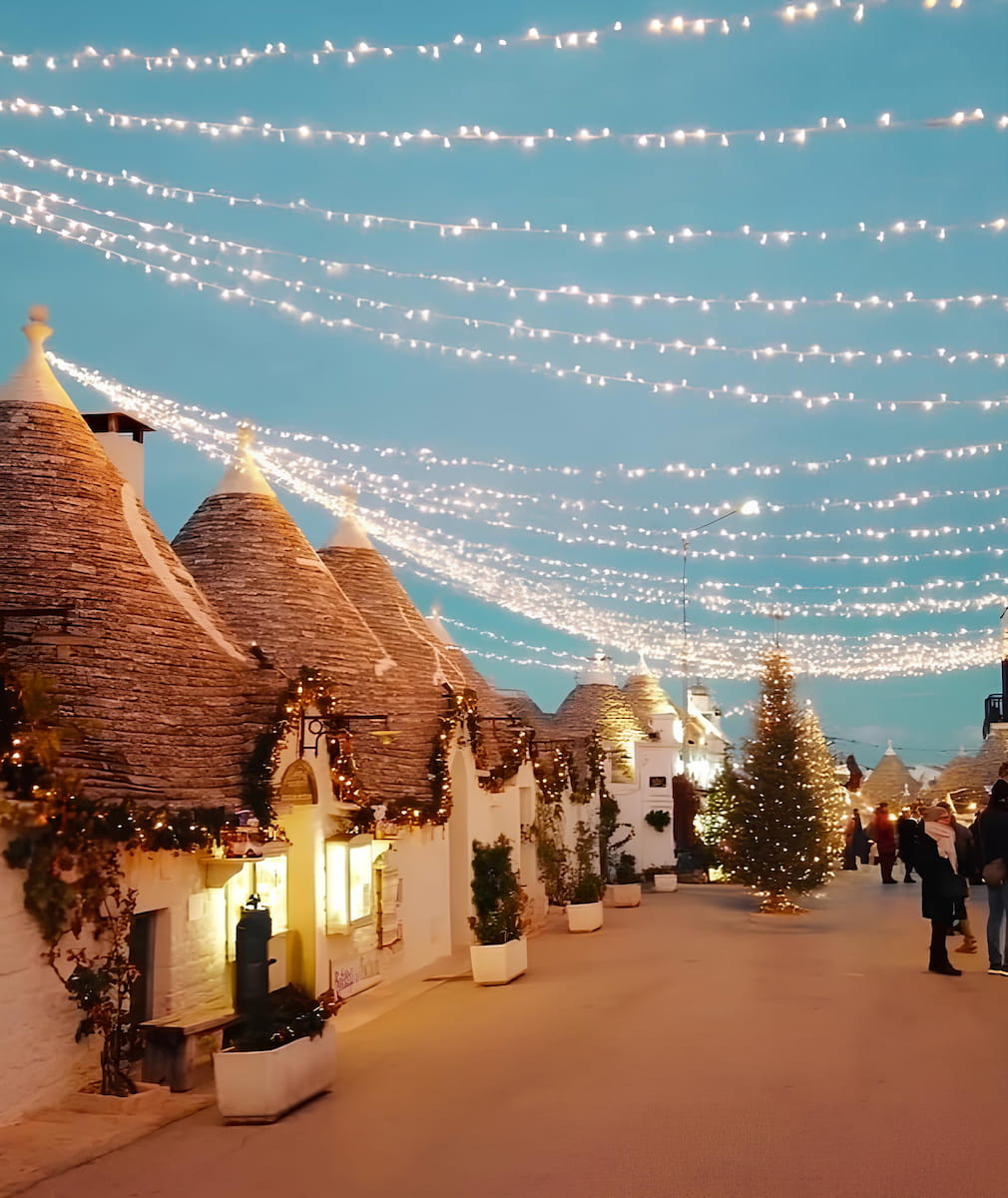
Living Nativity. The highlight of Christmas in Alberobello is undoubtedly the Presepe Vivente (Living Nativity), held on December 26-28 in the trulli of Aia Piccola. Unlike static nativity scenes, this immersive experience features over 250 local residents dressed in period costumes, recreating not just the birth of Jesus but an entire ancient village.
| Christmas Event Details | Information |
|---|---|
| Christmas Among the Trulli | December 8 – January 6, free to view illuminations |
| Christmas Market | December 8 – January 6, Piazza del Popolo, 10:00 AM – 10:00 PM |
| Living Nativity | December 26-28, Rione Aia Piccola, €5 (about $5.50 USD) |
Summer
Evening Passeggiata. Summer days in Alberobello can be scorching, but the evenings transform into a delightful social experience. I joined locals for the traditional passeggiata (evening stroll) along Corso Vittorio Emanuele around 8:00 PM, when the heat finally subsided and the streets came alive. Families, couples, and groups of friends filled the main street, stopping for gelato or simply greeting neighbors.
Festival Season. My summer visit coincided with the Festival dei Trulli (July 1-7), a week-long celebration featuring concerts, dance performances, and food events spread throughout town. The highlight was the Corteo Storico (historical parade) on July 7, where hundreds of locals dressed in medieval costumes processed through the streets. The sound of traditional tambourines and folk songs filled the air as dancers performed the pizzica, Puglia’s energetic traditional dance.
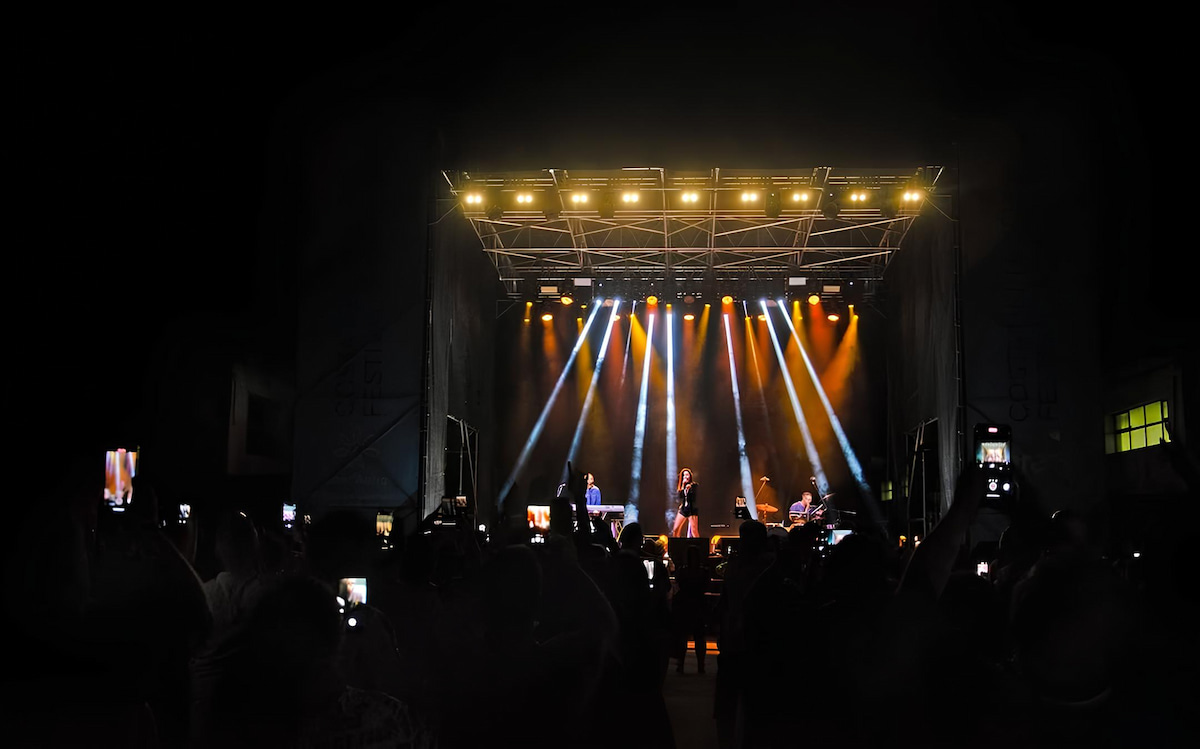
Culinary Experiences. Summer in Alberobello means outdoor dining among the trulli, with many restaurants setting up tables in small piazzas and alleyways. I discovered that summer brings special seasonal menus featuring produce at its peak – sweet tomatoes, fragrant basil, and tender zucchini flowers. At Trattoria Terra Madre on Via Galilei, I enjoyed a memorable dinner of orecchiette with fresh tomatoes and cacioricotta cheese for just €12, served in a charming courtyard surrounded by trulli. The restaurant’s owner explained how they source ingredients from small farms within 20 kilometers, ensuring everything is freshly harvested.
| Summer Event Details | Information |
|---|---|
| Festival dei Trulli | July 1-7, various locations, most events free |
| Corteo Storico | July 7, starts at Piazza del Popolo at 6:00 PM, free |
| Pizzica Dance Workshops | Every Tuesday in July/August, Largo Martellotta, €10 (about $11 USD) |
Spring
Wildflower Landscapes. My spring visit to Alberobello coincided with an explosion of color across the countryside. The rolling hills surrounding the town transform in April and May, with brilliant red poppies, purple wild orchids, and yellow broom flowers creating a stunning backdrop for the white trulli. I rented a bicycle from Trulli E-Bike and followed the gentle country roads toward Locorotondo. The contrast between the ancient stone walls, blooming wildflowers, and the distinctive trulli dotting the landscape created postcard-perfect views at every turn.
Easter Traditions. Witnessing Holy Week (Settimana Santa) celebrations in Alberobello was a deeply moving experience. The Good Friday procession (Via Crucis) wound through the trulli districts, with participants carrying torches and singing haunting traditional hymns that echoed off the stone buildings. What made this especially memorable was the setting – biblical scenes enacted against the backdrop of these prehistoric-looking structures created a timeless quality. On Easter Sunday, the main celebration moved to Piazza del Popolo, where locals gathered after Mass for the “Scoppio del Carro” – a small decorated cart that explodes with confetti and flowers, symbolizing new life.
Gastronomic Renewal. Spring brings a revival of fresh flavors to Alberobello’s restaurants and markets. The weekly farmers’ market (Thursday mornings in Piazza Mercato) overflowed with seasonal treasures – tender fava beans, wild asparagus, and fresh pecorino cheese. I joined a cooking class at La Cantina in Piazza Sacramento, where I learned to prepare traditional spring dishes like fave e cicoria.
| Spring Event Details | Information |
|---|---|
| Holy Week Processions | Week before Easter, various locations, free |
| Farmers’ Market | Every Thursday, 8:00 AM – 1:00 PM, Piazza Mercato |
| Spring Cooking Classes | March-May, La Cantina, €65 |
Autumn
Harvest Celebrations. Autumn in Alberobello brings a rich tapestry of harvest festivals and food-focused events. I timed my visit to coincide with the Sagra del Vino (Wine Festival) held the second weekend of October in Piazza del Popolo. For just €10, I received a tasting glass and tokens to sample wines from over 20 local producers. What made this experience special wasn’t just the excellent Primitivo and Negroamaro wines, but the festive atmosphere – live folk music played while locals performed traditional dances, and the trulli districts were decorated with grape vines and autumn foliage.
Perfect Climate. The autumn weather created ideal conditions for exploring Alberobello and its surroundings. With temperatures hovering around a pleasant 18-22°C, I could wander for hours without the summer heat or winter chill. The quality of light in October was particularly magical – the lower sun angle created a golden glow that made the white trulli seem to shimmer against the clear blue sky. The absence of summer crowds meant I could photograph empty streets and enter popular sites like Trullo Sovrano without waiting in line.
Culinary Treasures. Autumn is undoubtedly the season for food lovers in Alberobello. The annual Truffle Festival (last weekend of November) transformed Piazza del Popolo into a gourmet paradise, with vendors selling fresh truffles, truffle-infused oils, and prepared dishes. I splurged on a truffle-hunting experience with Masseria Brancati, where I joined a local hunter and his trained dog searching for black truffles in the oak forests outside town.
| Autumn Event Details | Information |
|---|---|
| Sagra del Vino | Second weekend of October, Piazza del Popolo, €10 |
| Olive Harvest Tours | November, various masserie, €25-45 |
| Truffle Festival | Last weekend of November, Piazza del Popolo, free entry |
Day Trips from Alberobello
1. Polignano a Mare
Coastal Charm. The moment I stepped into Polignano a Mare, just 33 km from Alberobello, I was captivated by its dramatic setting. Perched atop limestone cliffs overlooking the crystal-clear Adriatic Sea, this whitewashed town feels worlds away from the trulli-filled streets of Alberobello. The journey took just 45 minutes by car, but transported me to what felt like a completely different Puglia. The salty sea breeze, the sound of waves crashing against the rocks, and the dazzling blue water stretching to the horizon created an immediate sensory shift that made me glad I’d made the trip.
Historic Wanderings. Entering through the Porta Vecchia gate, I lost myself in the maze of narrow, winding streets of the old town. What struck me most was how the brilliant white buildings contrasted against the deep blue sky – perfect for photography. I stumbled upon three panoramic terraces offering breathtaking views of the coastline. My favorite was Terrazza Santo Stefano, where I spent nearly an hour just watching the waves crash against the cliffs below.
Beach Experience. After exploring the old town, I headed to Lama Monachile beach (also called Cala Porto), the iconic pebble beach nestled between towering cliffs. Despite visiting in April, I found several locals brave enough to dive from the surrounding rocks – a tradition that continues year-round. The beach is small but stunning, with the ancient Roman bridge of Lama Monachile creating a perfect frame for photos.
| Polignano a Mare Details | Information |
|---|---|
| Distance from Alberobello | 33 km (about 45 minutes by car) |
| Day Trip Cost | €40-60 (about $44-66) including transportation and lunch |
| Best Visiting Hours | 9:00 AM – 7:00 PM (arrive early to beat summer crowds) |
⭐ Best tours
- Polignano a Mare: Boat Tour of the Caves - Small Group – An exclusive experience for visiting the most fascinating and beautiful caves of the rocky coast of Polignano a Mare by boat, including the renowned Grotta Palazzese, Grotta Ardito, Grotta degli Innamorati, Scoglio dell’Eremita and Lama Monachile. A swim break and a small refreshment on board based on Prosecco and typical Apulian taralli are foreseen.
- Private tour in Ape Calessino in Polignano a Mare – Visit the most beautiful places in Polignano with us! We will make you discover breathtaking landscapes in the unique atmosphere of Puglia! The scents of the sea in the streets of the town, the chatter of the alleys and the intense colors of sky and sea that meet! We are waiting for you to give you a unique emotion between anecdotes, history and legend!
2. Locorotondo
Whitewashed Wonder. Just 8 km from Alberobello lies Locorotondo, a circular town (its name literally means “round place”) that took my breath away with its pristine beauty. After a quick 20-minute drive through the picturesque Itria Valley, I arrived at this hilltop gem known for its perfectly maintained historic center. Unlike the conical trulli of Alberobello, Locorotondo charmed me with its uniform whitewashed buildings and flower-filled balconies. Walking through the immaculate circular streets felt like stepping into a freshly painted canvas – so clean and perfectly maintained that it almost seemed unreal.
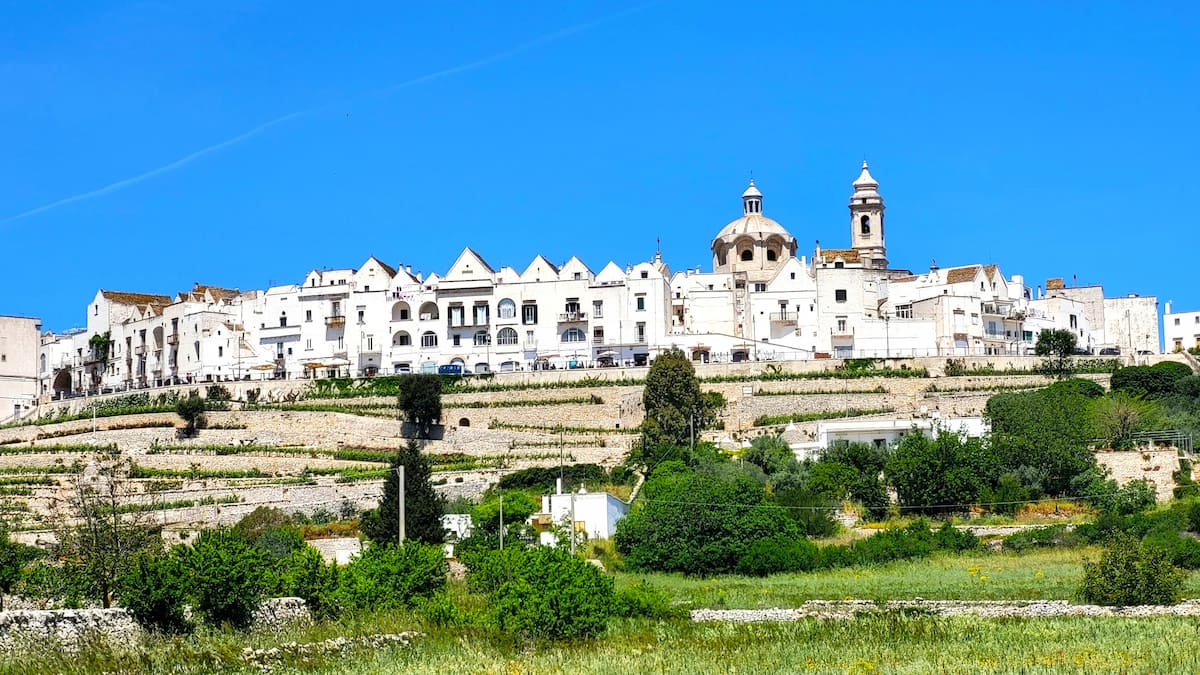
Culinary Discoveries. My exploration of Locorotondo centered around its incredible food and wine scene. The town is famous for its crisp white wine, and I couldn’t leave without sampling it. At a small enoteca called DiVino, I enjoyed a glass of local Locorotondo DOC (€5) paired with a plate of fresh cheeses from nearby farms. Later, following a recommendation from a local, I stopped at a traditional bakery where I tried the region’s famous freshly baked focaccia topped with cherry tomatoes and local olive oil for just €3.50.
Panoramic Perspectives. What makes Locorotondo truly special is its position atop a hill, offering spectacular views of the surrounding Itria Valley. I discovered a viewpoint at the edge of town where I could see miles of countryside dotted with trulli, vineyards, and olive groves stretching toward the horizon. The late afternoon light cast a golden glow over the landscape, creating a scene so beautiful it hardly seemed real. Several locals told me that sunset is the magic hour here, when the white town takes on a pinkish hue and the valley below is bathed in soft light.
| Locorotondo Details | Information |
|---|---|
| Distance from Alberobello | 8 km (about 20 minutes by car) |
| Day Trip Cost | €25-40 (about $27.50-44) including transportation and lunch |
| Best Visiting Hours | 10:00 AM – 8:00 PM (stay for sunset if possible) |
⭐ Best tours
- E-Bike, Focaccia and Wine – We start from Alberobello, the capital of the trulli, towards Locorotondo, the most evocative village in the Valle d’Itria: where a tasty stop at a traditional local bakery awaits us.
- Locorotondo private tour: a charming town in the Itria Valley – This tour allows you to discover one of the most beautiful villages of Italy. The charming rounded old town, which is the origin of the name, preserves a medieval village characterized by the “cummerse”, that is to say two-storey houses with pitched roof built with chiancarelle stones.
3. Martina Franca
Baroque Splendor. My day trip to Martina Franca, just 13 km from Alberobello, introduced me to a completely different architectural style than the trulli I’d grown accustomed to. This elegant town surprised me with its impressive baroque buildings and ornate churches that wouldn’t look out of place in a much larger city. As I walked through the grand Porta Santo Stefano entrance into the historic center, the elaborate stone carvings and stately palaces immediately signaled that this was a town with a wealthy past. The highlight was undoubtedly the Basilica di San Martino with its intricate façade that had me standing in awe for several minutes, trying to take in all the details.
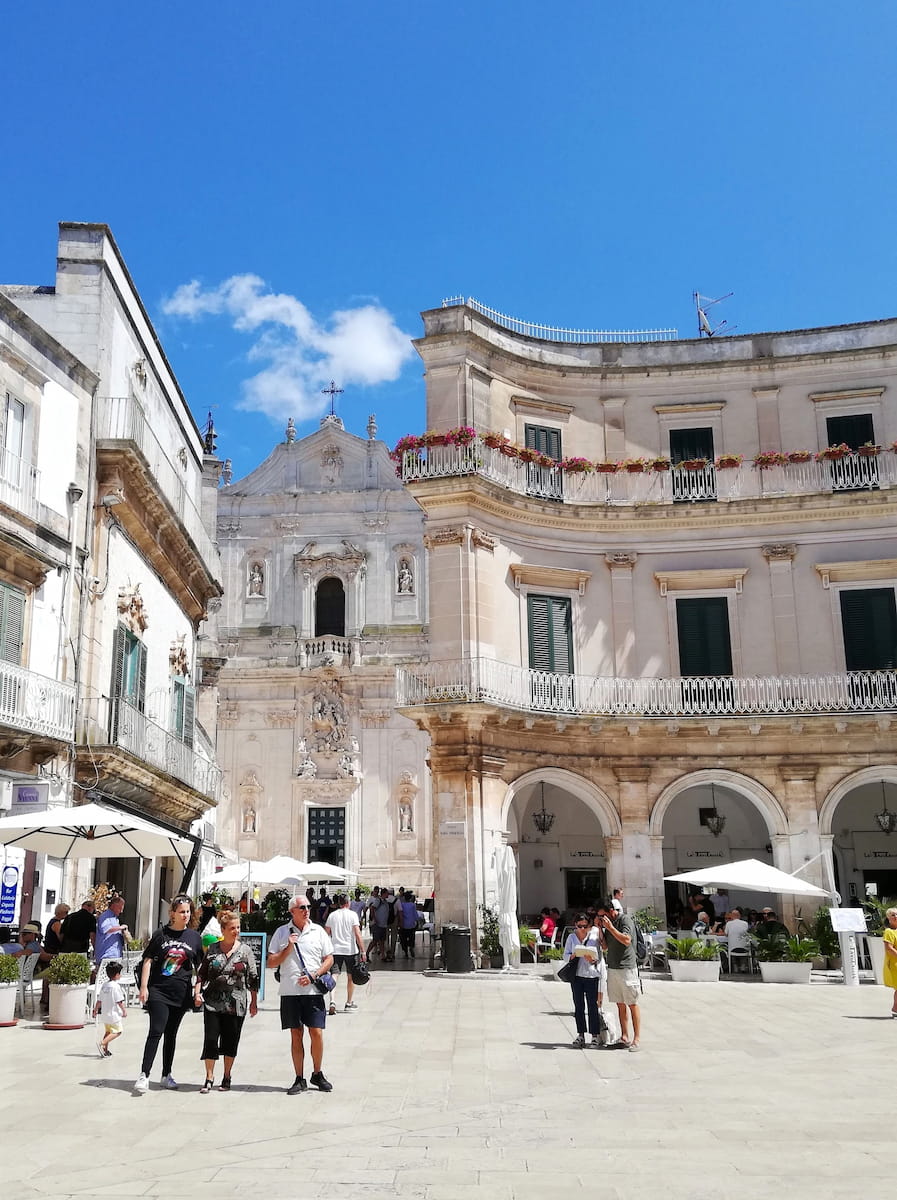
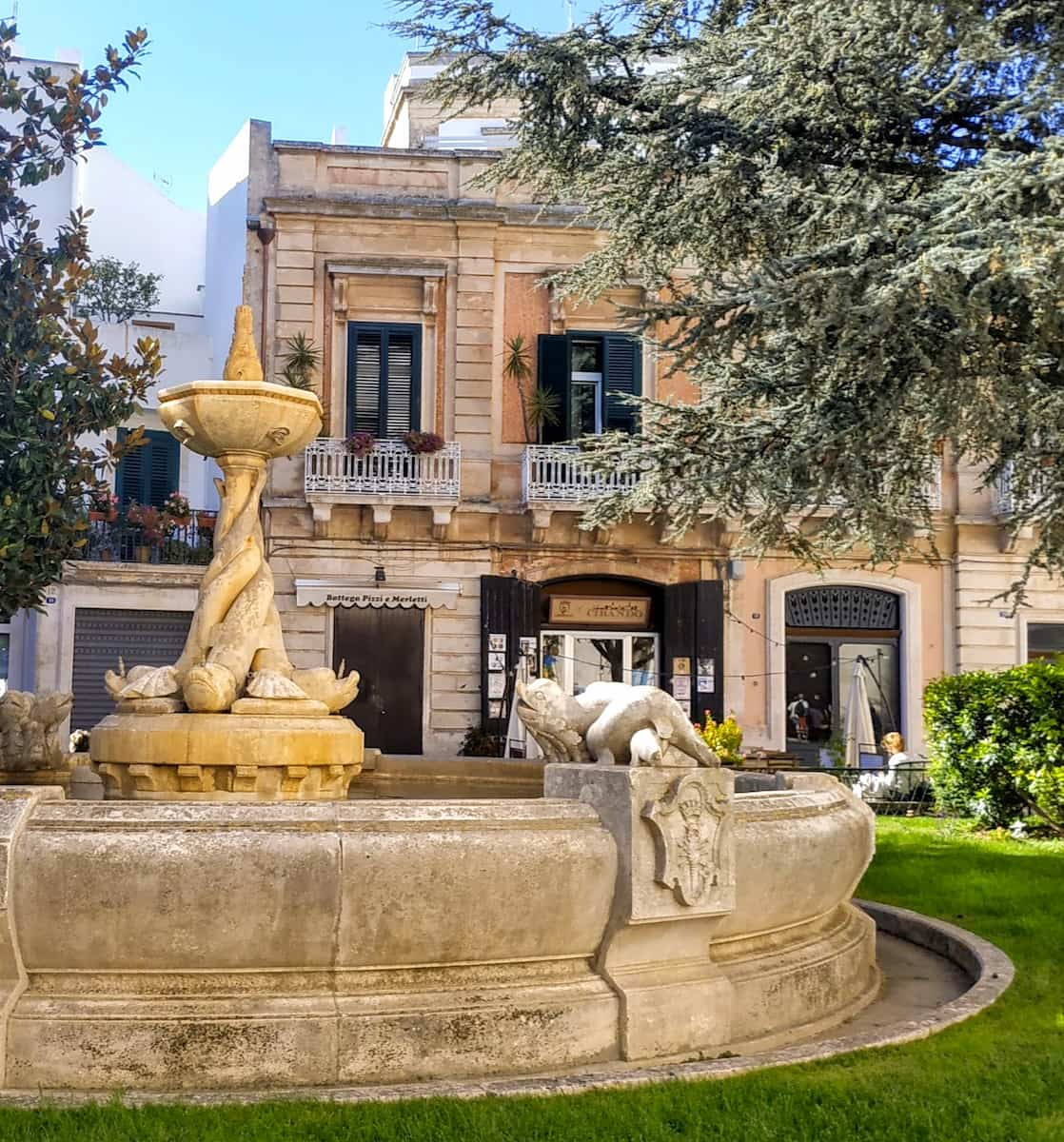
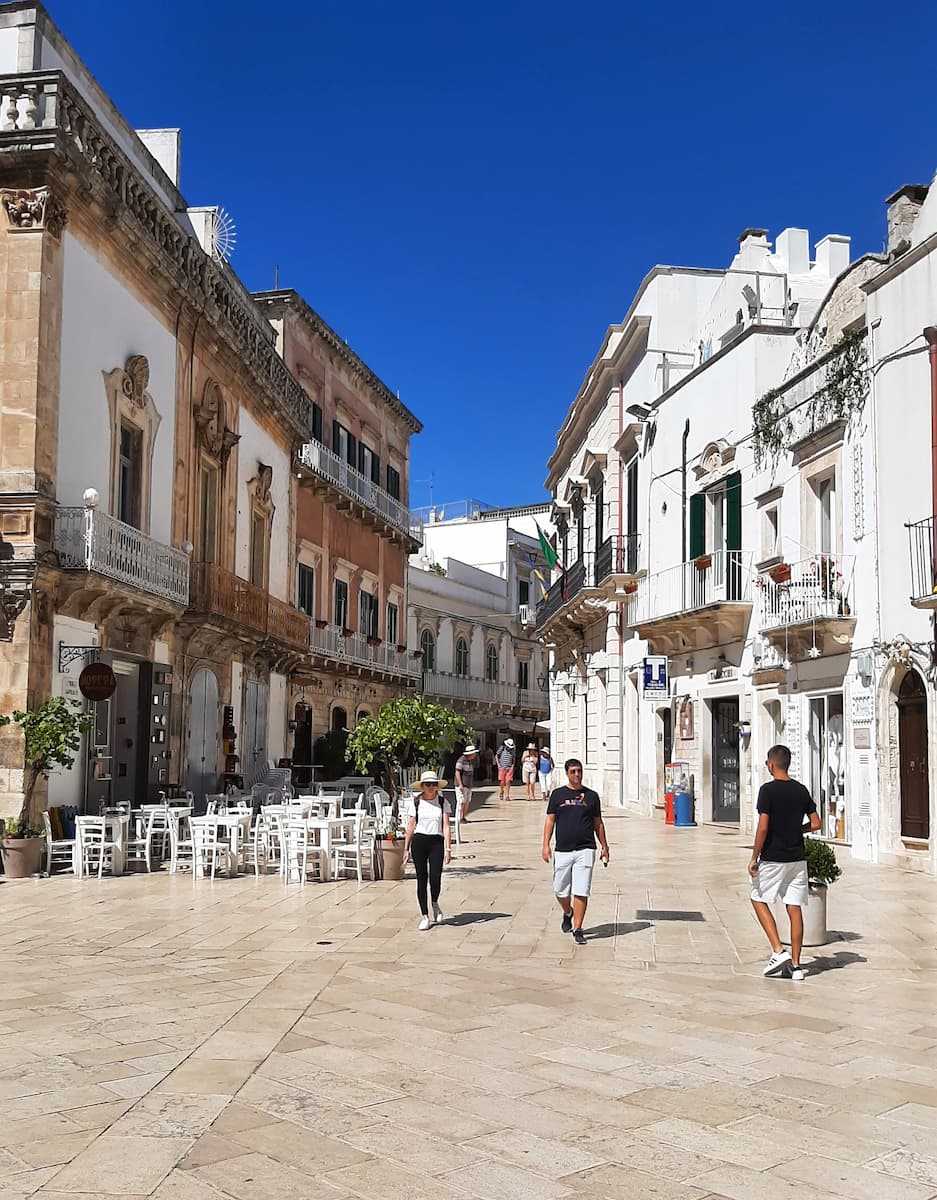
Market Discoveries. I timed my visit to coincide with Martina Franca’s Wednesday market, and it turned out to be one of the best decisions of my trip. The market sprawls across Piazza XX Settembre and surrounding streets, filled with stalls selling everything from local produce to clothing. What caught my attention was the food section, where I watched locals haggle over the freshest cheeses, vegetables, and the town’s famous capocollo – a delicate cured pork that’s a specialty of the region. I purchased a sandwich filled with this delicious meat for just €4 from a vendor who proudly explained how it’s made using traditional methods passed down through generations. The flavor was unlike any cured meat I’d tasted before – delicately spiced and meltingly tender.
| Martina Franca Details | Information |
|---|---|
| Distance from Alberobello | 13 km (about 25 minutes by car) |
| Day Trip Cost | €30-45 (about $33-49.50) including transportation and lunch |
| Market Day | Every Wednesday, 8:00 AM – 1:00 PM |
⭐ Best tours
- Martina Franca: Wine & Local Products Tasting – Enjoy the wines and local products of the Apulia region with this wine tasting experience in Martina Franca.
- Private visit to the Frantoio Rosso Ipogeo in Martina Franca – The visit to the Frantoio Rosso Ipogeo gives the feeling of traveling through time: first when Puglia was submerged by the sea until the last century, when olive oil was produced. The route starts from the observation of marine fossils embedded in the limestone rock, and goes through the late medieval centuries when lampante oil was produced and exported to Europe.
❓ FAQ
How do I get to Alberobello?
The best way to get to Alberobello is by train from Bari, the main city in the region of Puglia. The train journey takes about 1.5 to 2 hours. You can also drive directly to Alberobello from Bari or Brindisi airports, which is convenient if you’re on a road trip through Puglia.
Is Alberobello worth a visit?
Absolutely! Alberobello is a UNESCO World Heritage Site and is famous for its trulli houses – unique, whitewashed, cone-roofed homes that top the list of things to see in southern Italy. Even if you only have one day in Alberobello, it’s a place to visit for its magical atmosphere and history.
What is Alberobello famous for?
Alberobello is famous for its trulli – these round, stone houses with conical roofs are the highlights of Alberobello and the main reason people visit. The town is also known for its friendly people and delicious food, including bombette di Alberobello (local stuffed meat rolls).
Can I stay in a trullo in Alberobello?
Yes, you can stay overnight in a traditional trullo in Alberobello. Many properties in Alberobello have been converted into guesthouses and offer a unique way to experience the magic of Alberobello. Spending the night lets you enjoy the quieter side of Alberobello after the day-trippers leave.
What are the best things to see in Alberobello?
Don’t miss the Rione Monti and Aia Piccola districts, the largest trullo in Alberobello (Trullo Sovrano), and the church in Alberobello (Chiesa di Sant’Antonio). A walking tour of Alberobello is a great way to see the trulli houses and learn about the feudal period in Alberobello.
How much time should I spend in Alberobello?
You can see the main attractions in one day in Alberobello, but staying overnight is recommended to experience the town without crowds. Two to three hours is enough for a quick visit, but an overnight stay lets you see the best places when it’s quieter.
Is it better to take a guided tour or wander around?
Both options are great! A guided tour or walking tour of Alberobello will help you understand the history of Alberobello and see hidden gems. But wandering around the centre of Alberobello on your own is also enjoyable, especially if you like to explore at your own pace.
What’s the best way to get around Alberobello?
Alberobello is a small town in Puglia, so the best way to get around is on foot. The main attractions are close together, and walking lets you discover the different parts of Alberobello, including the quieter side of Alberobello.
